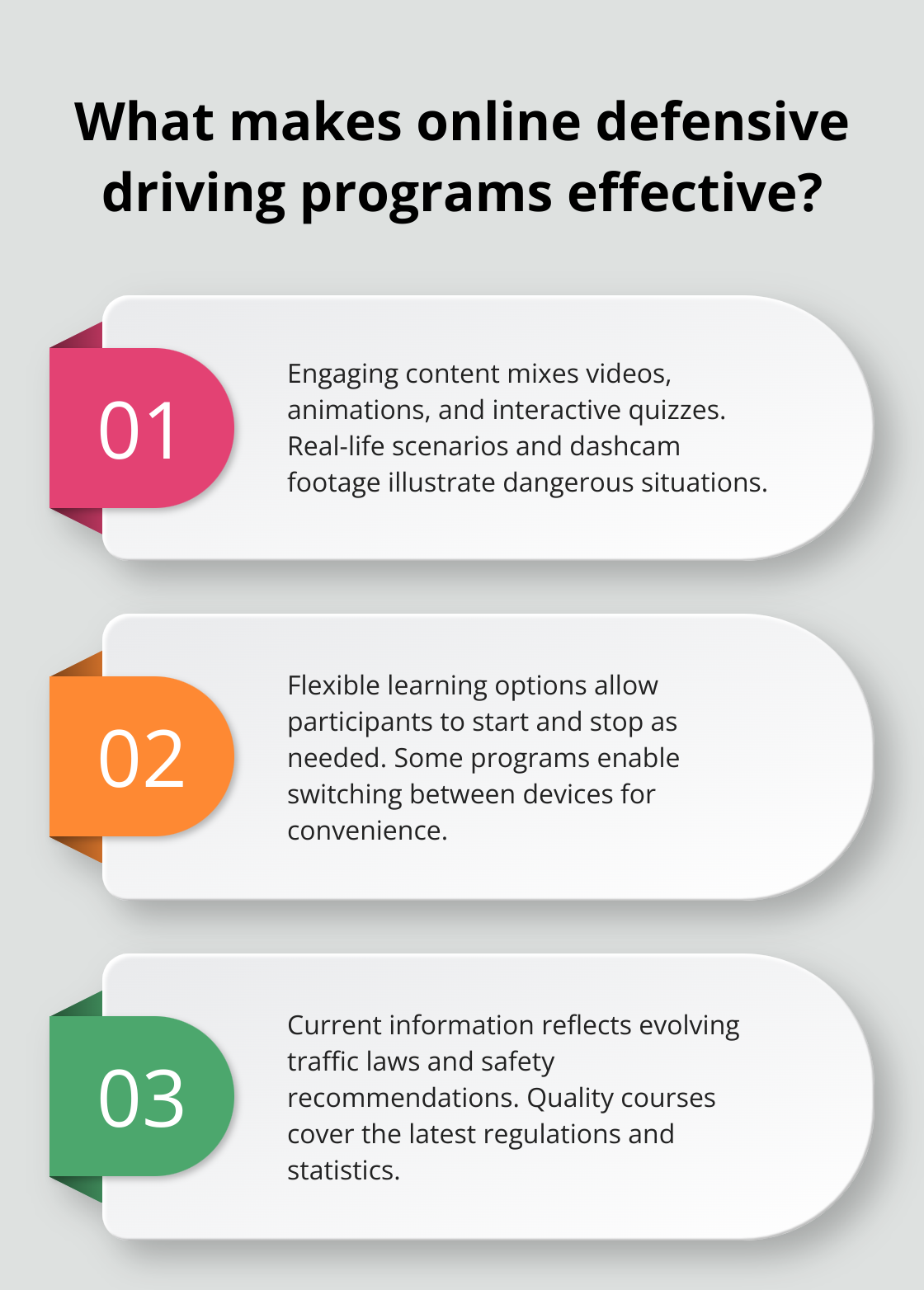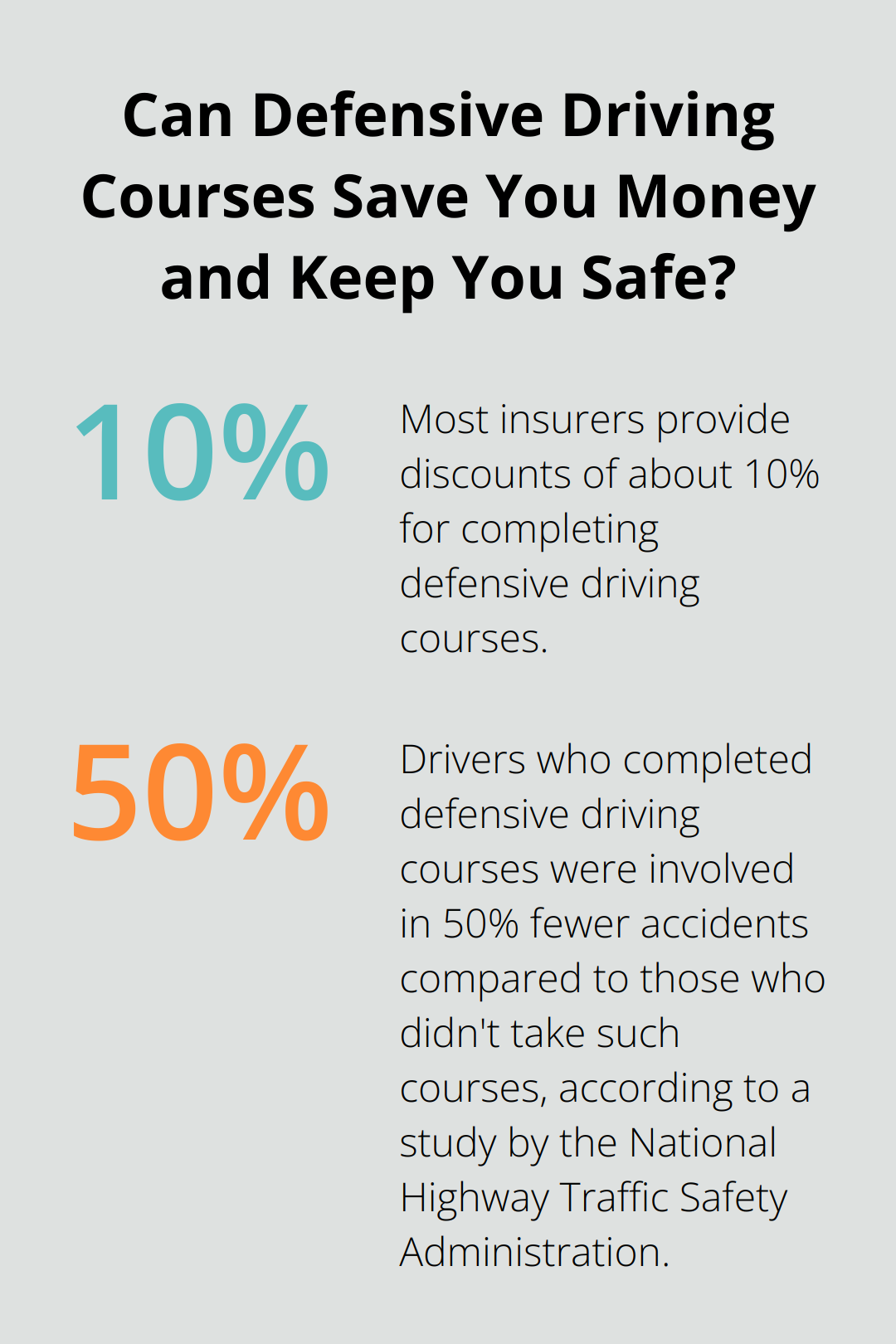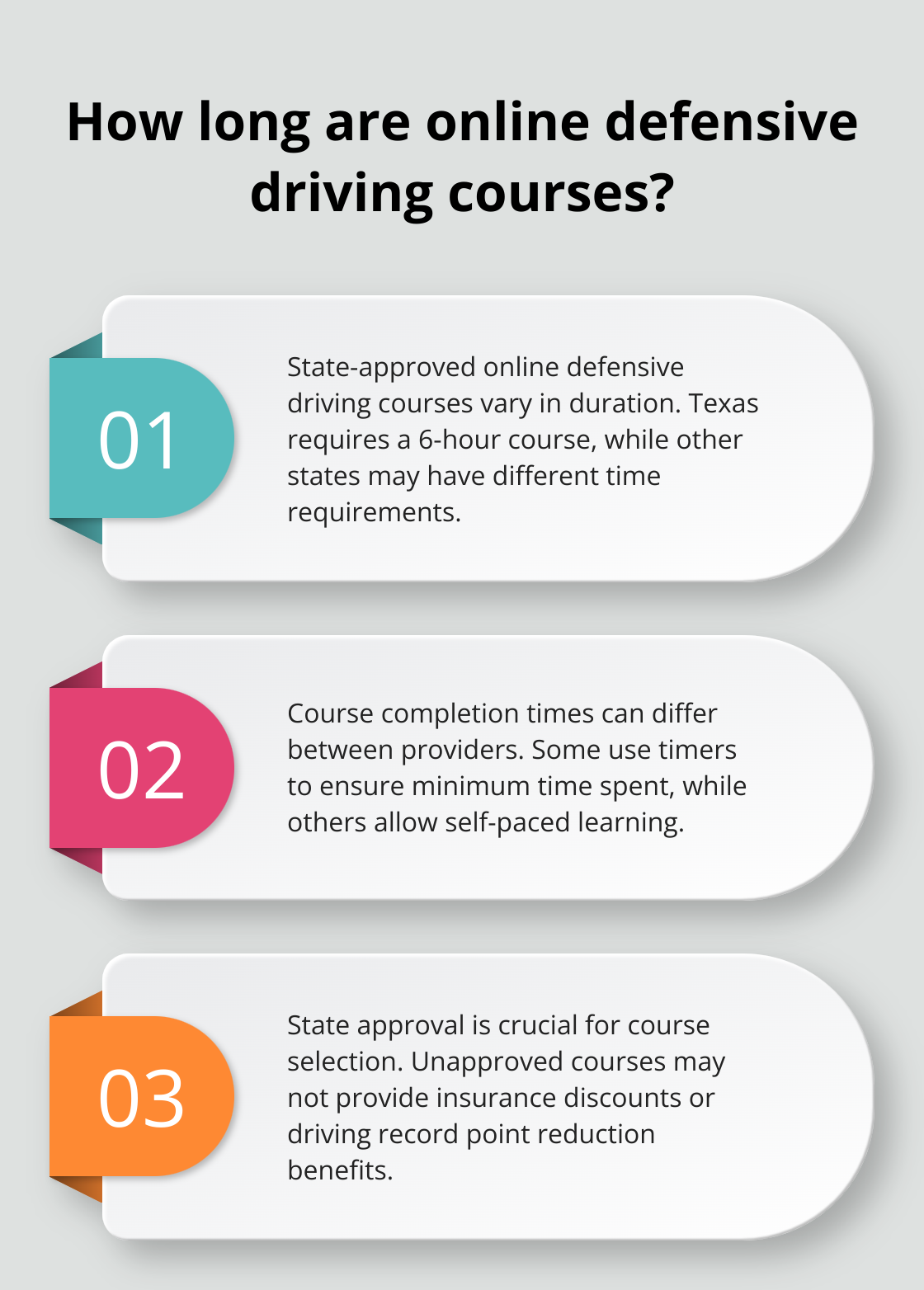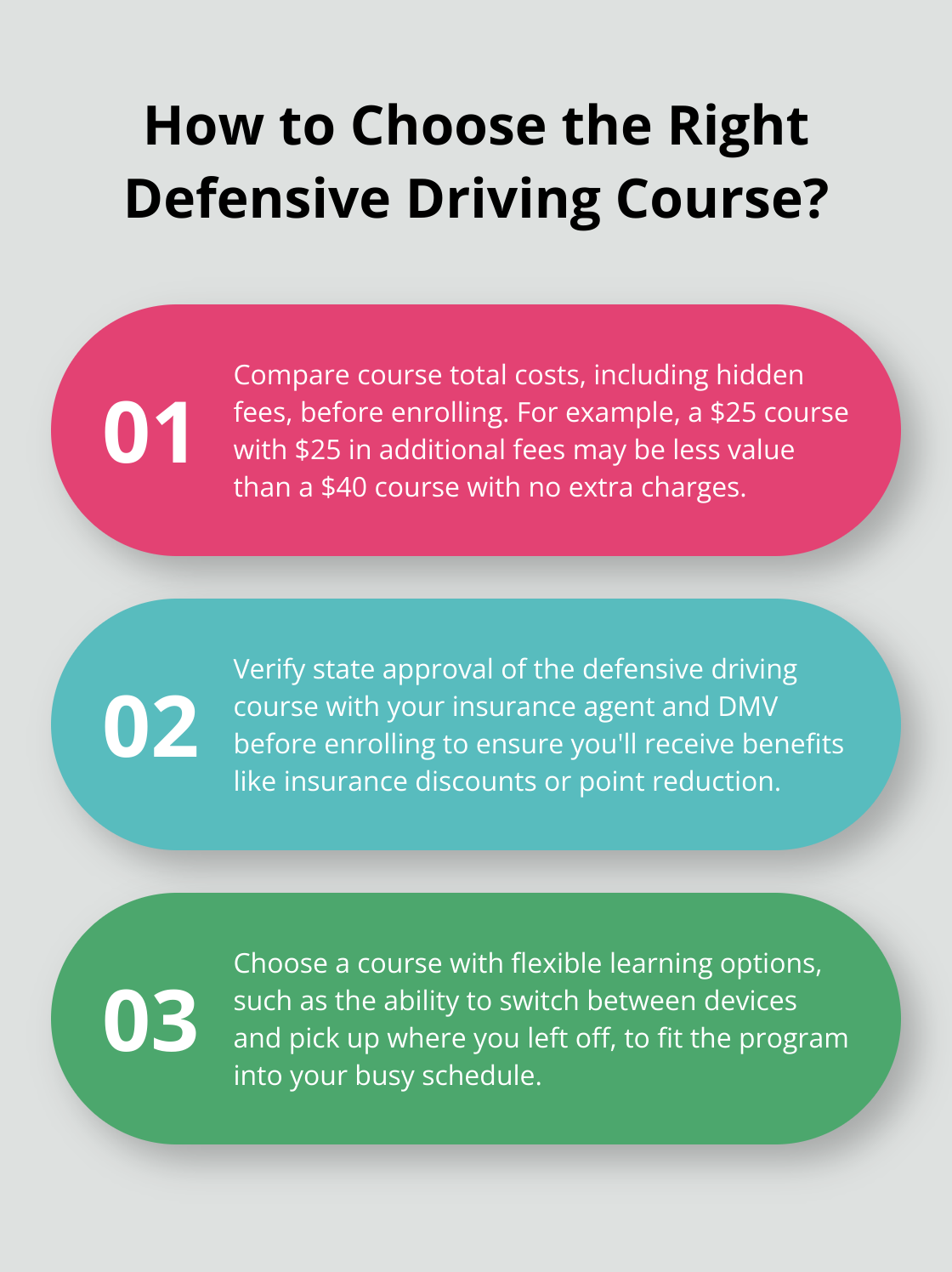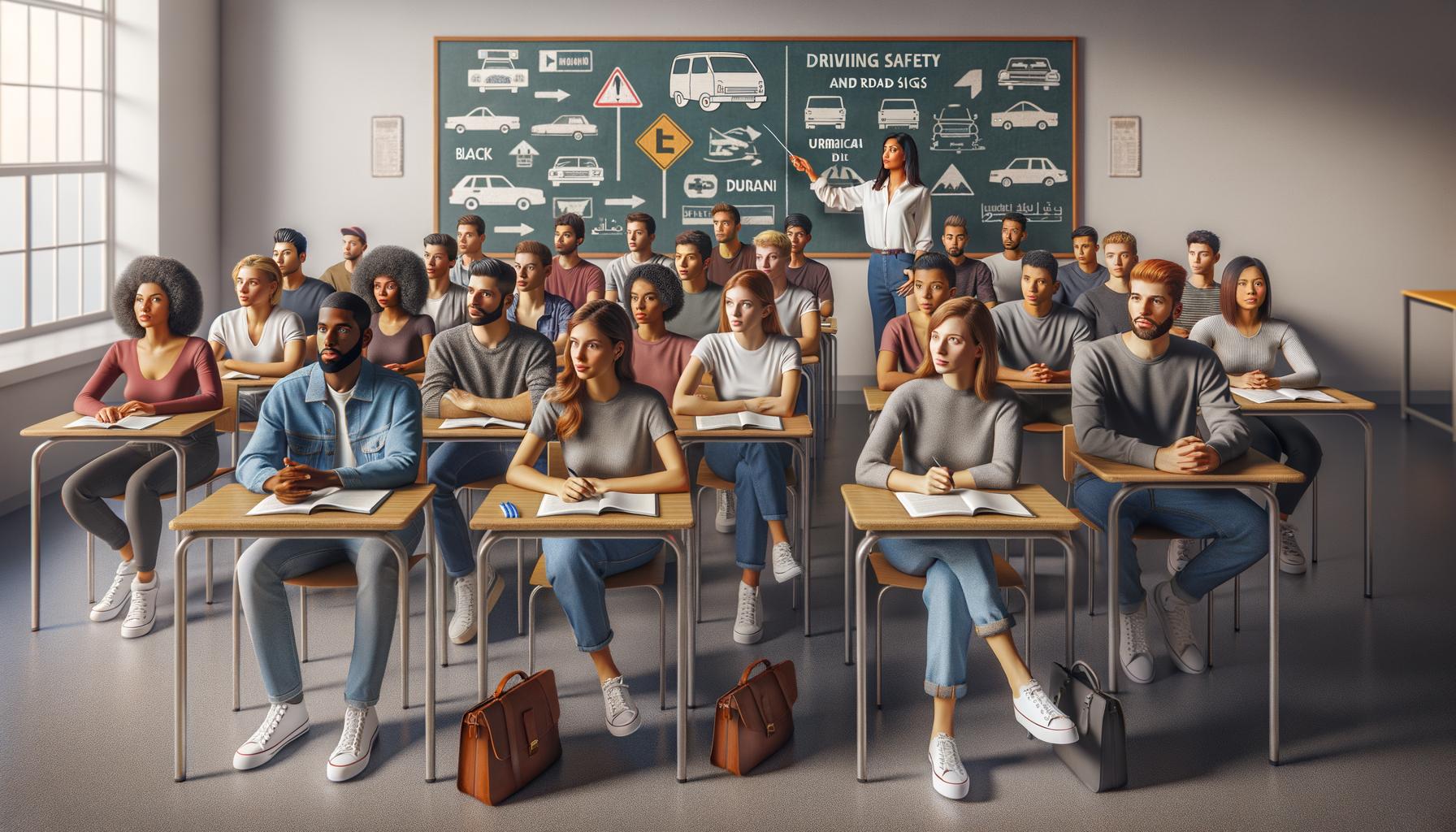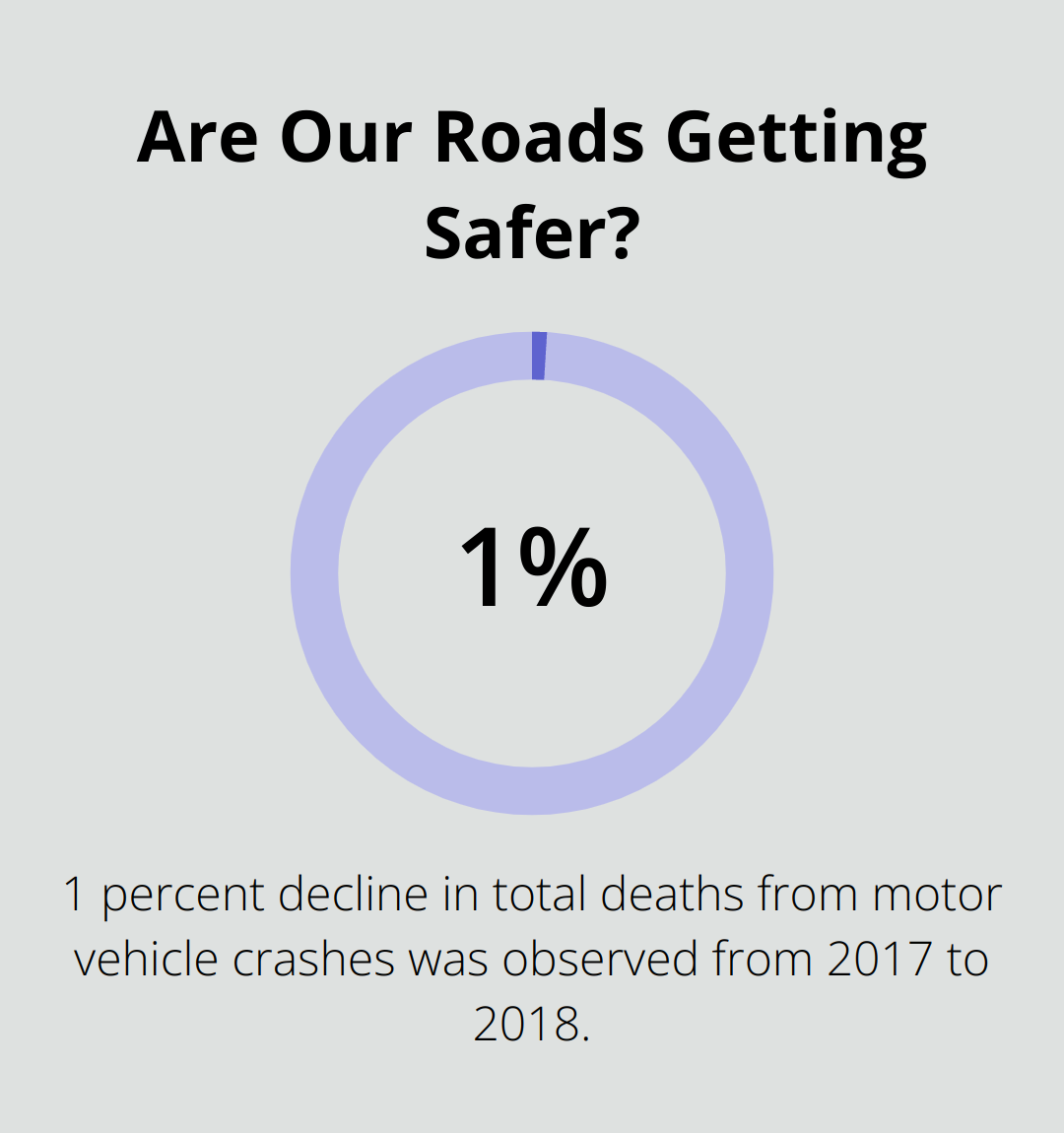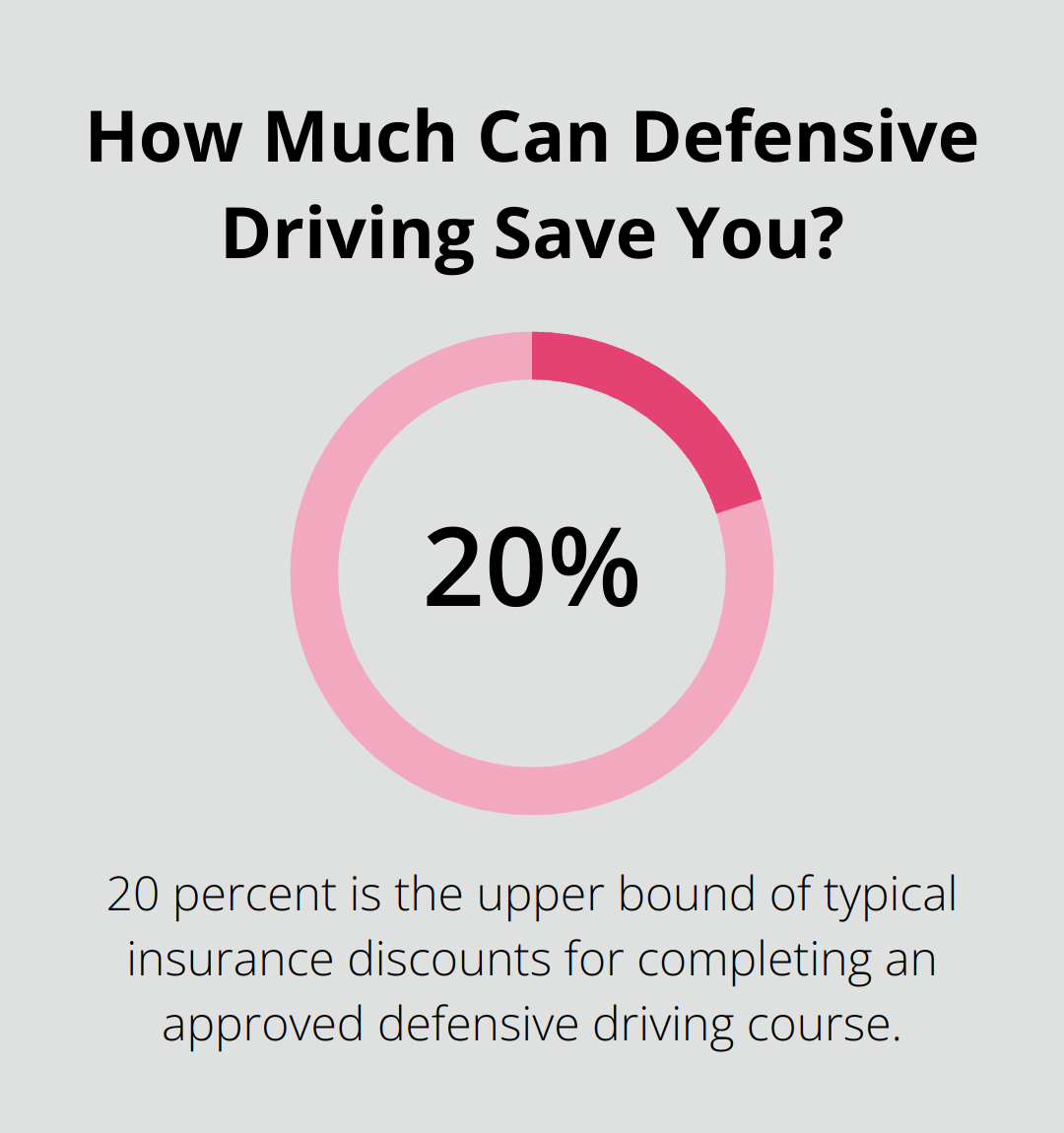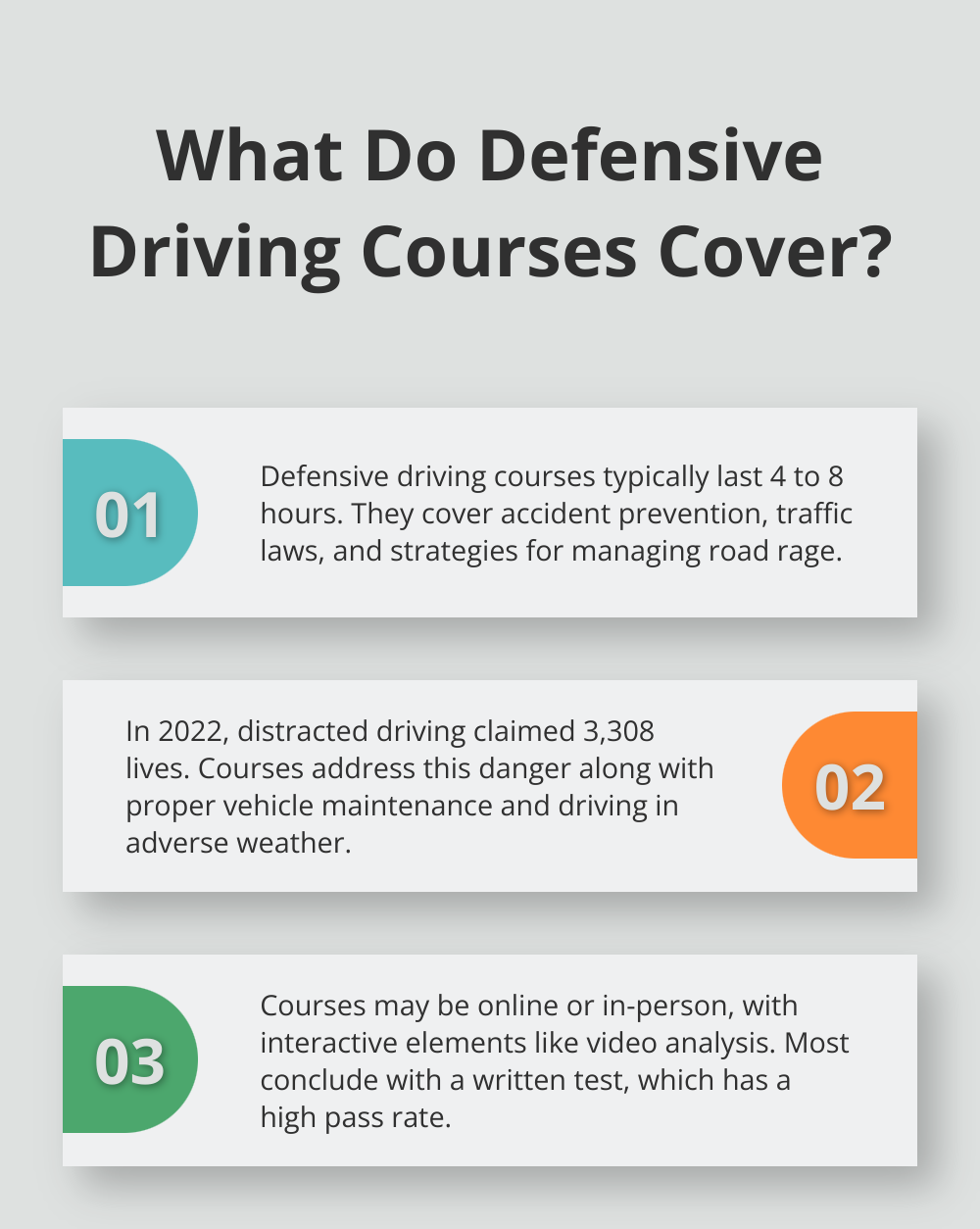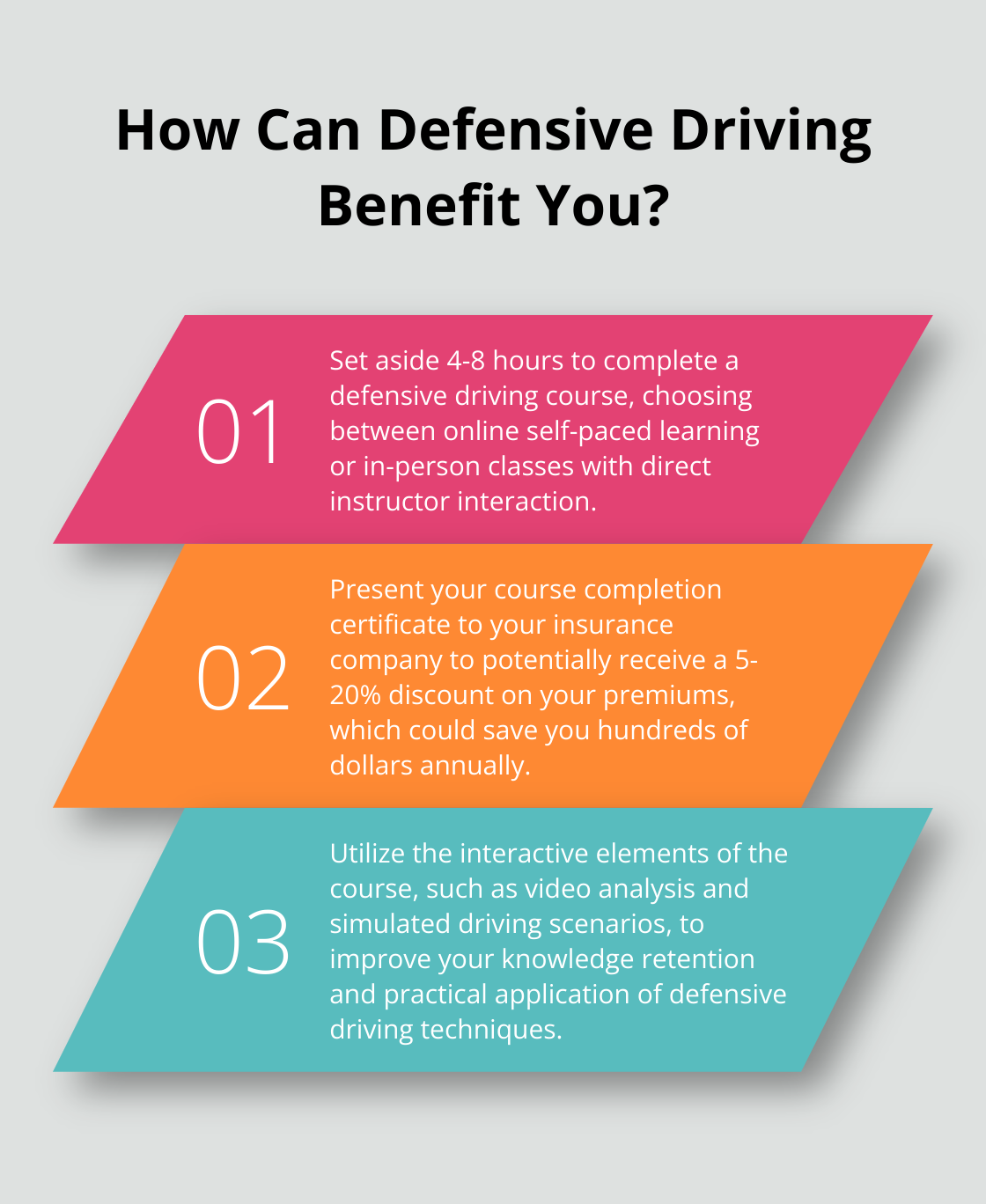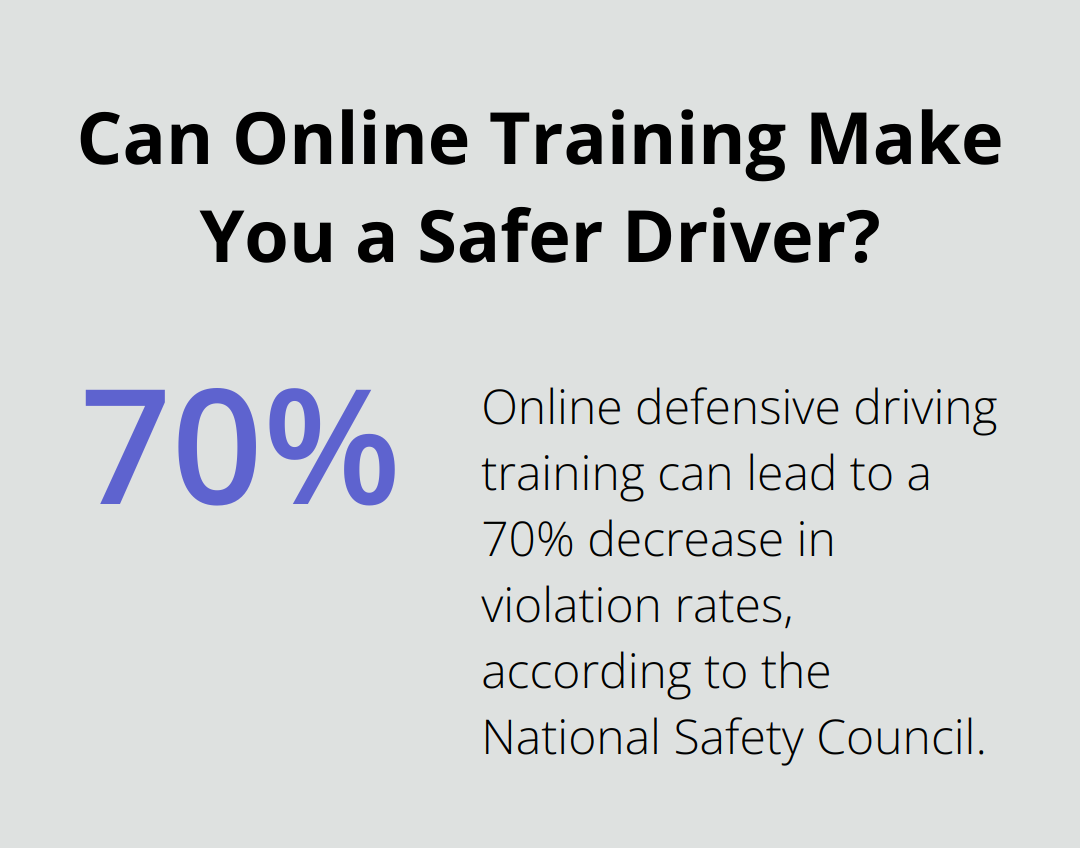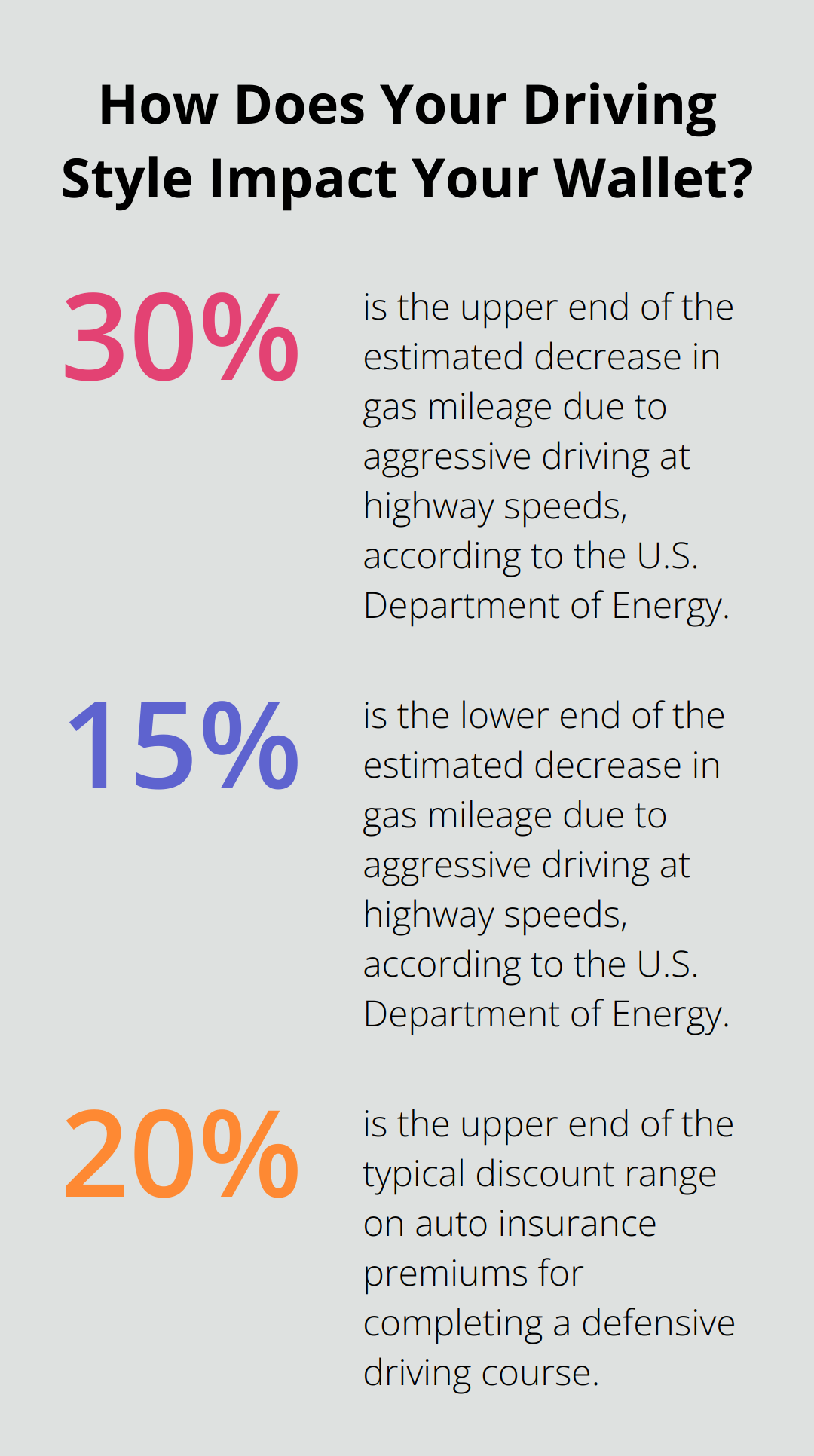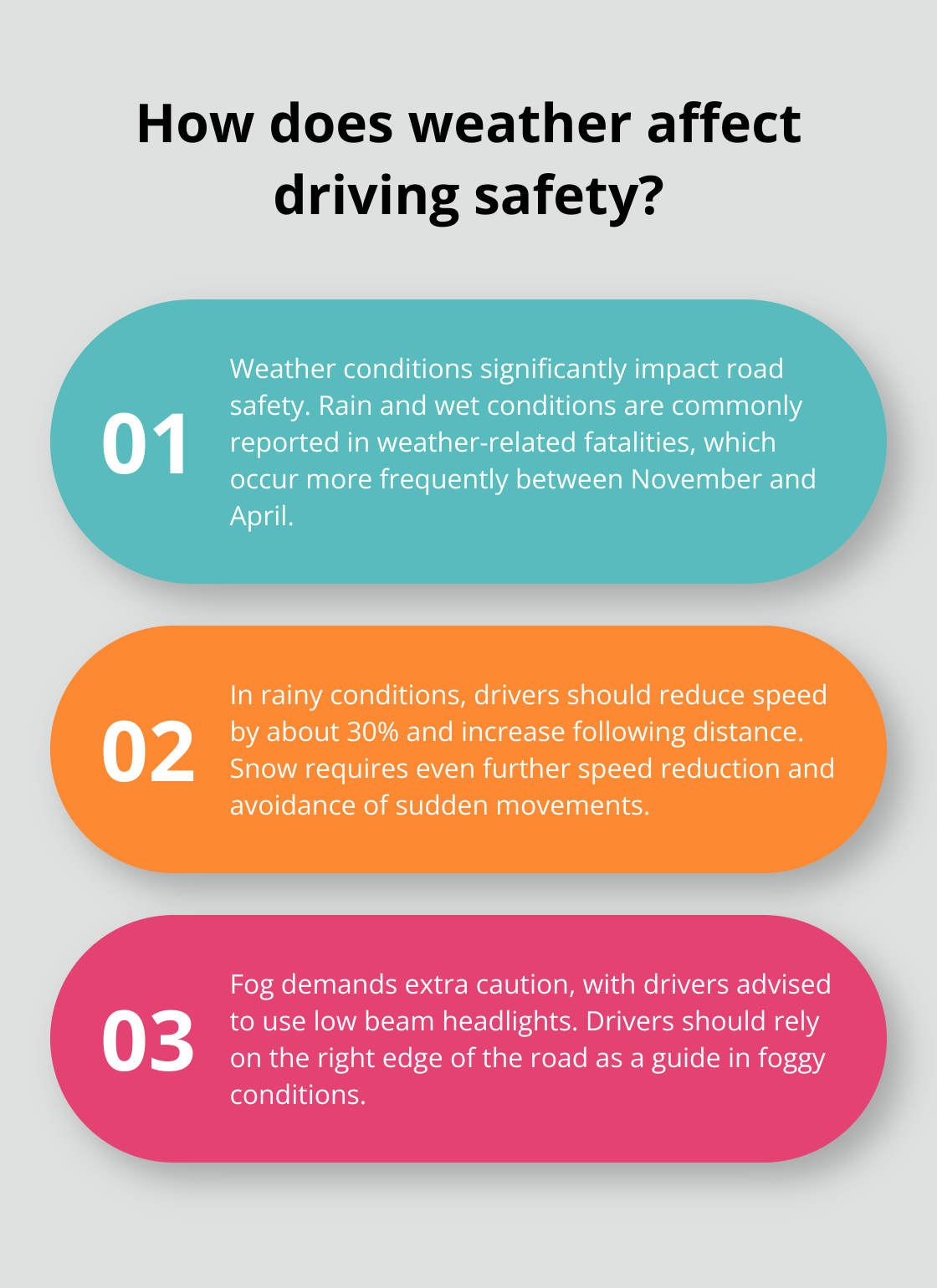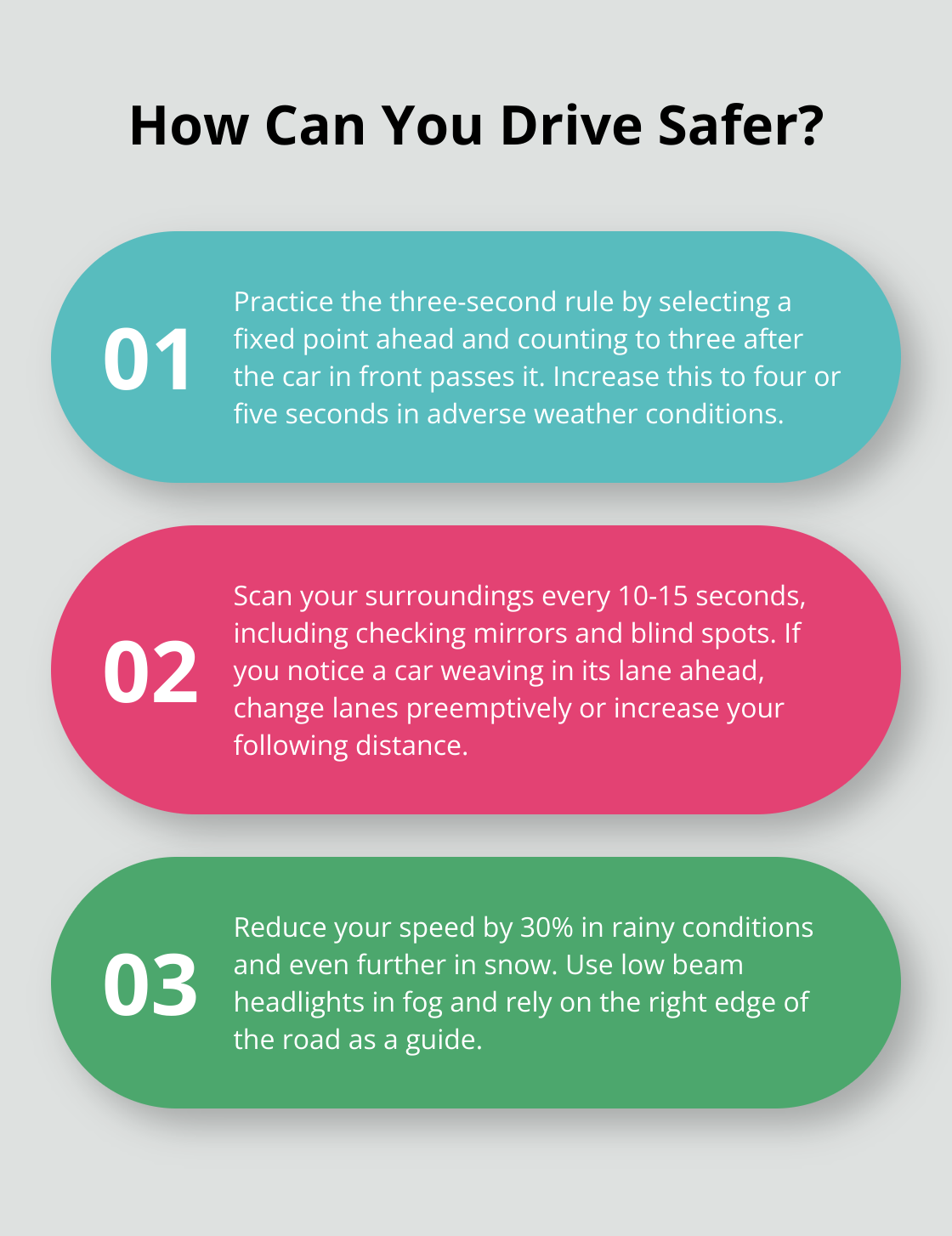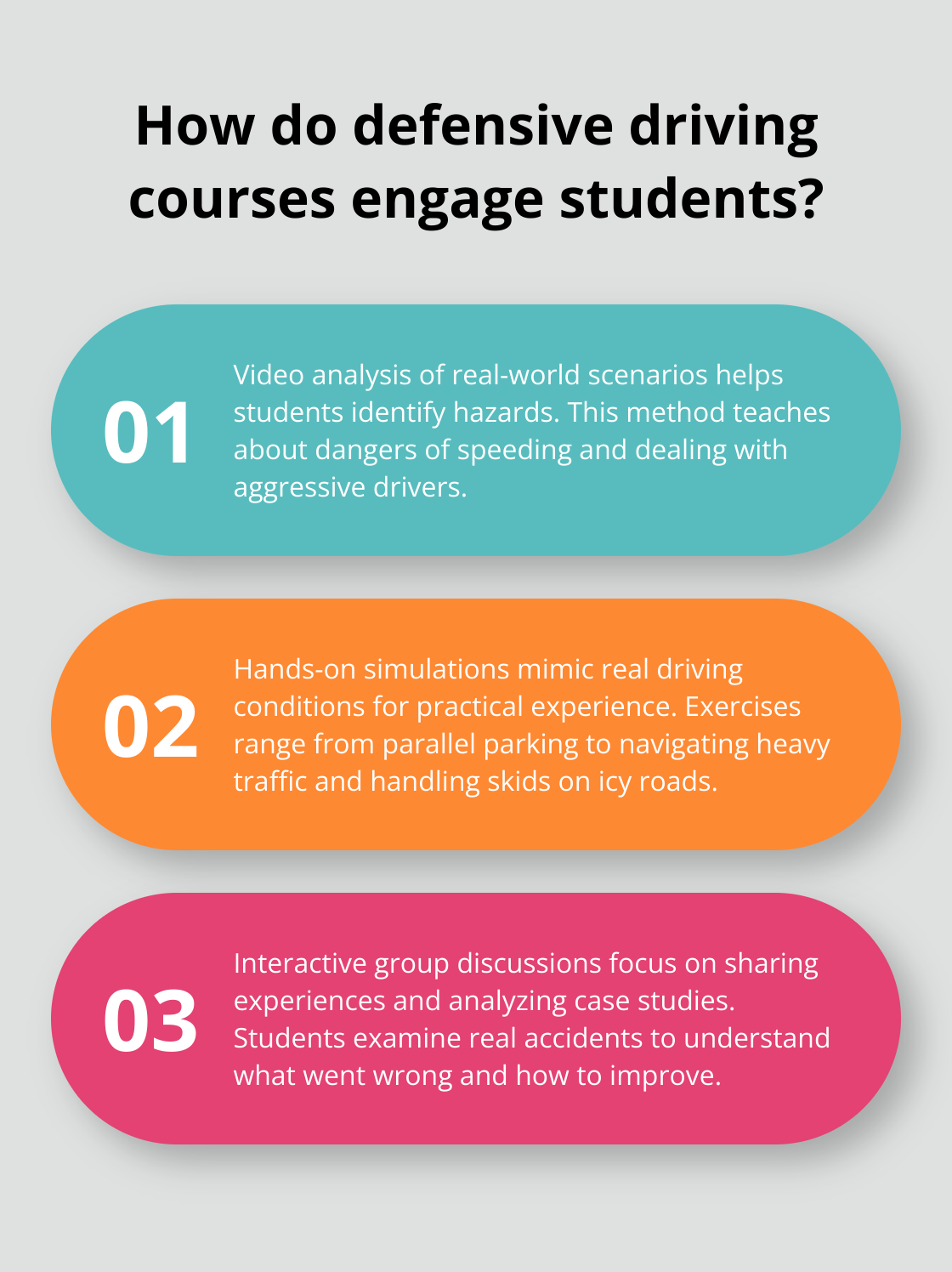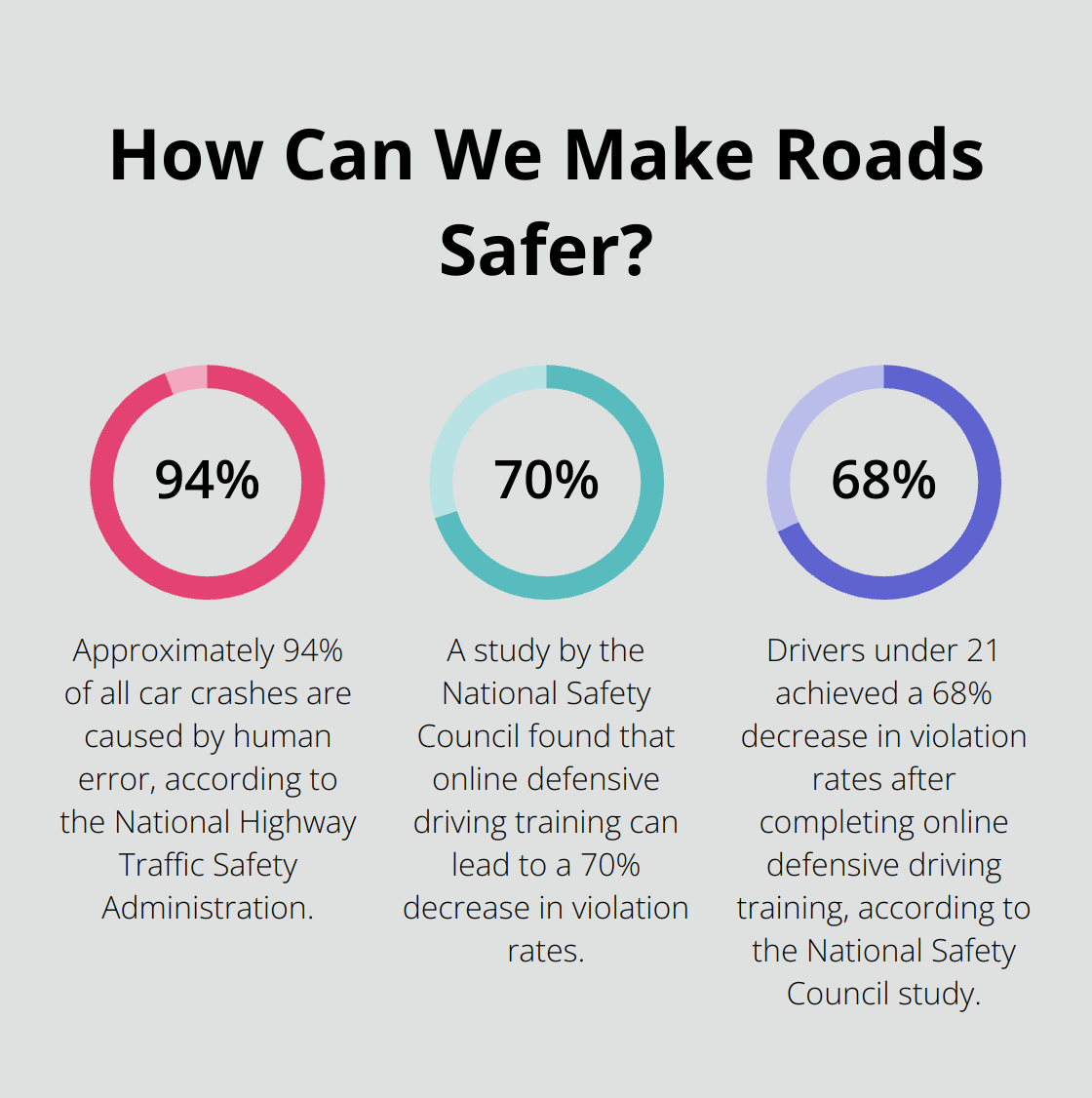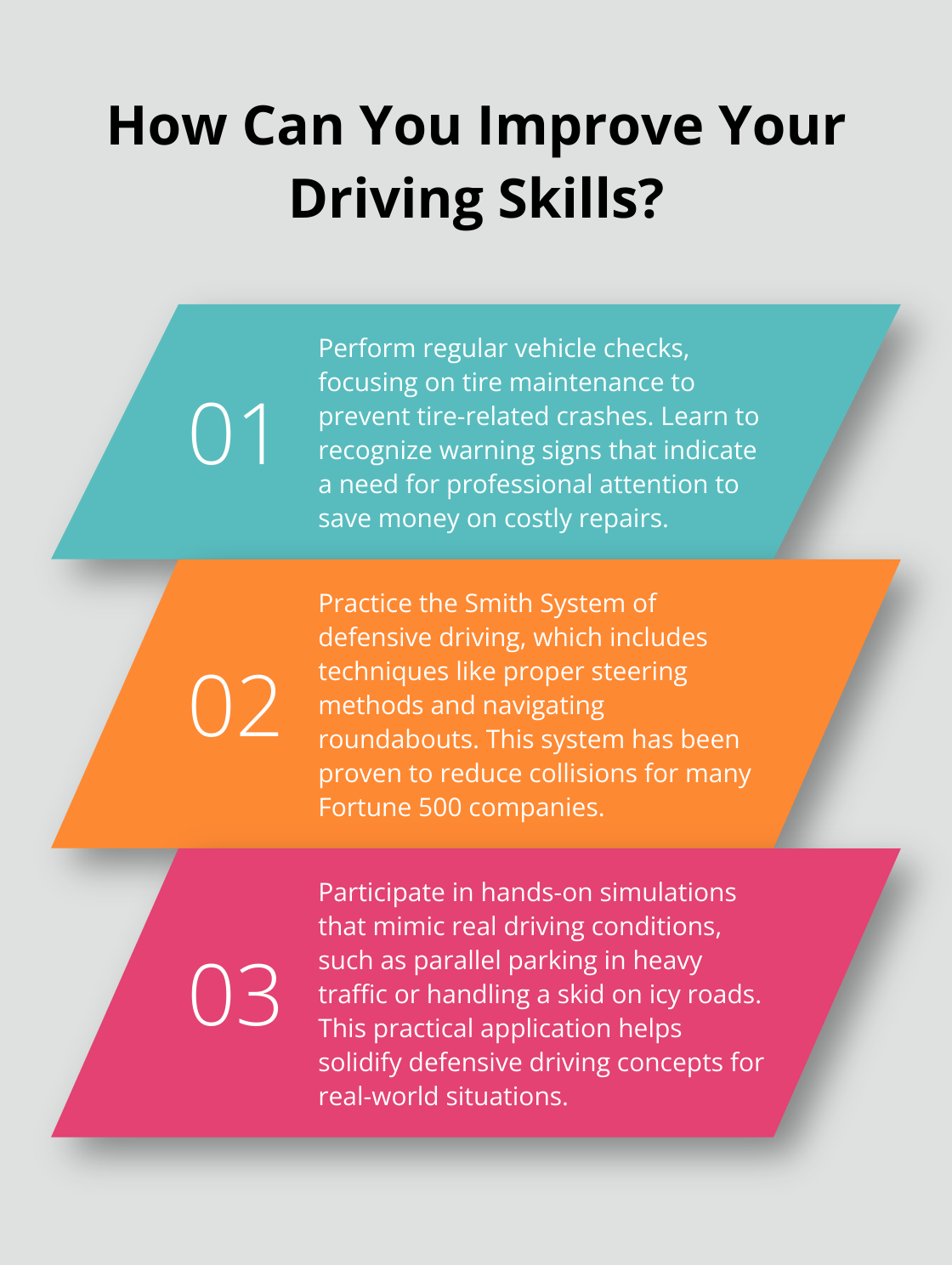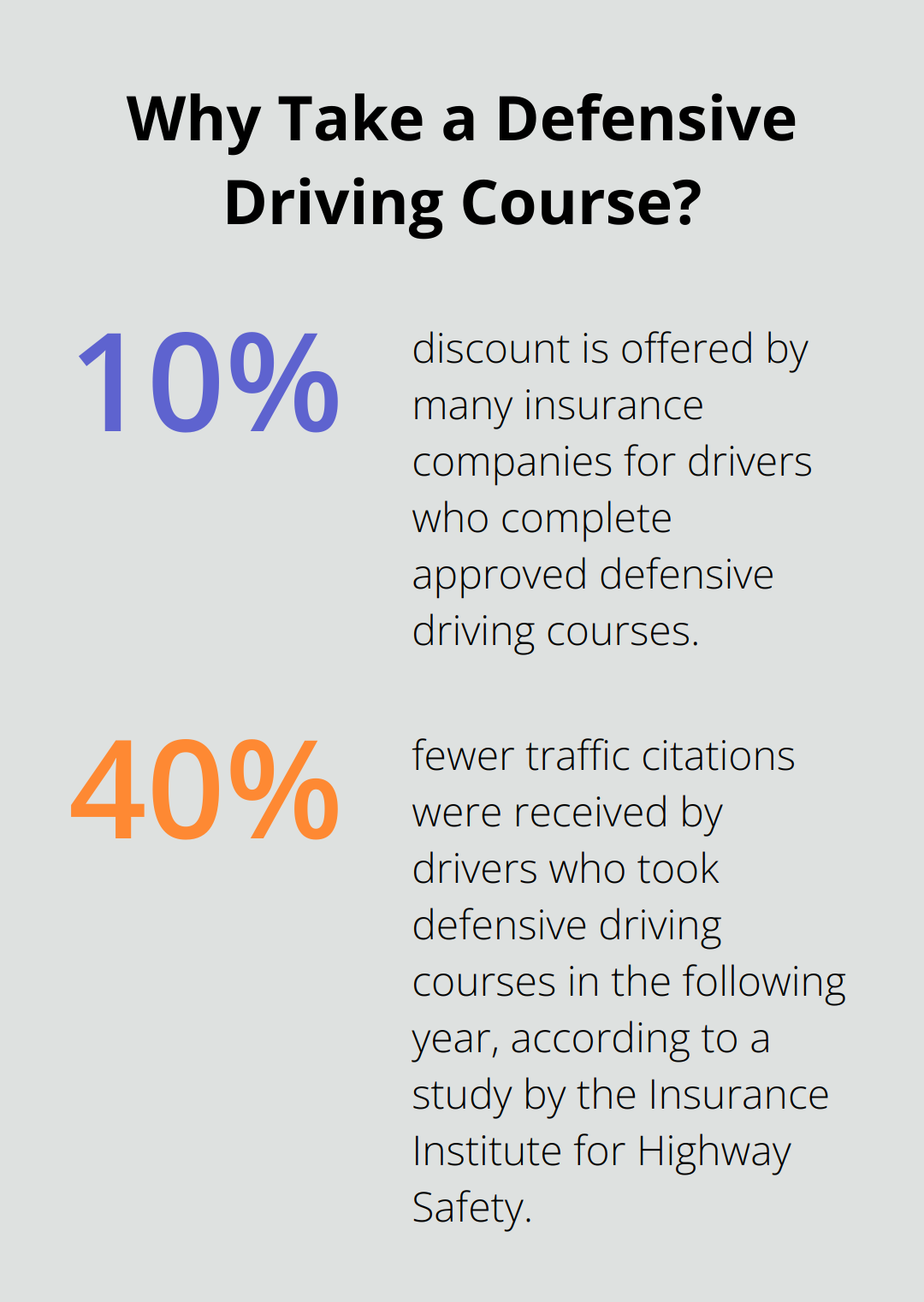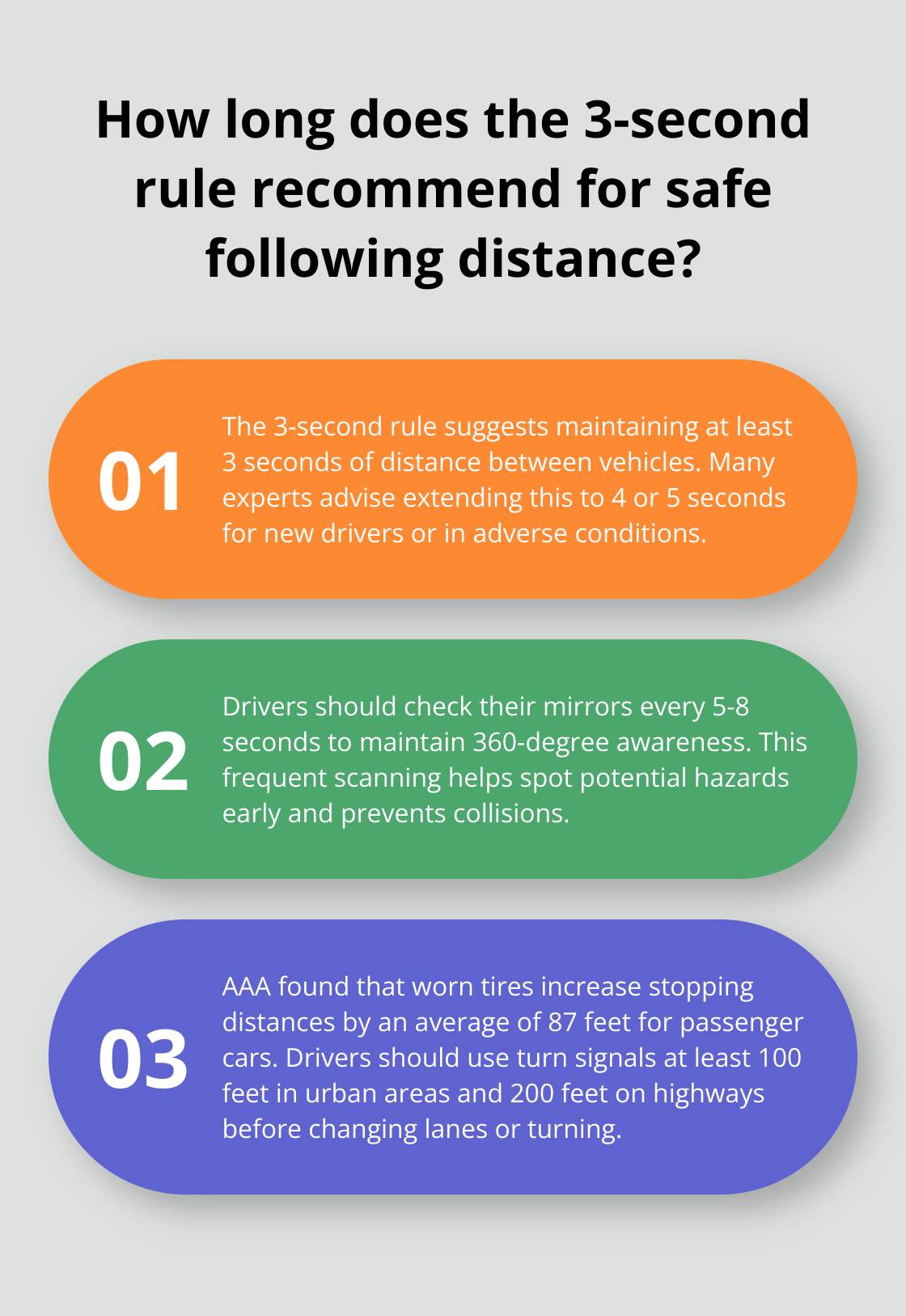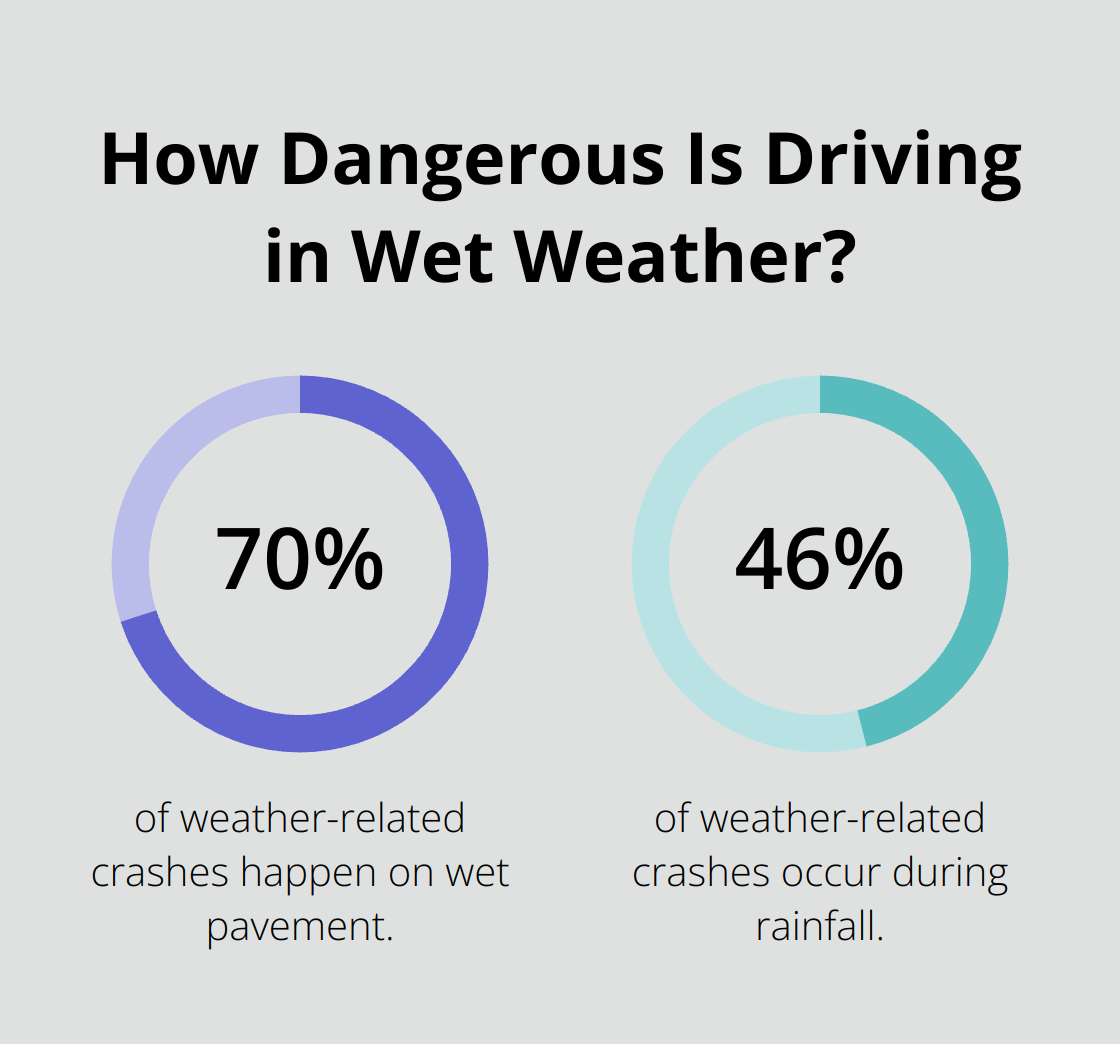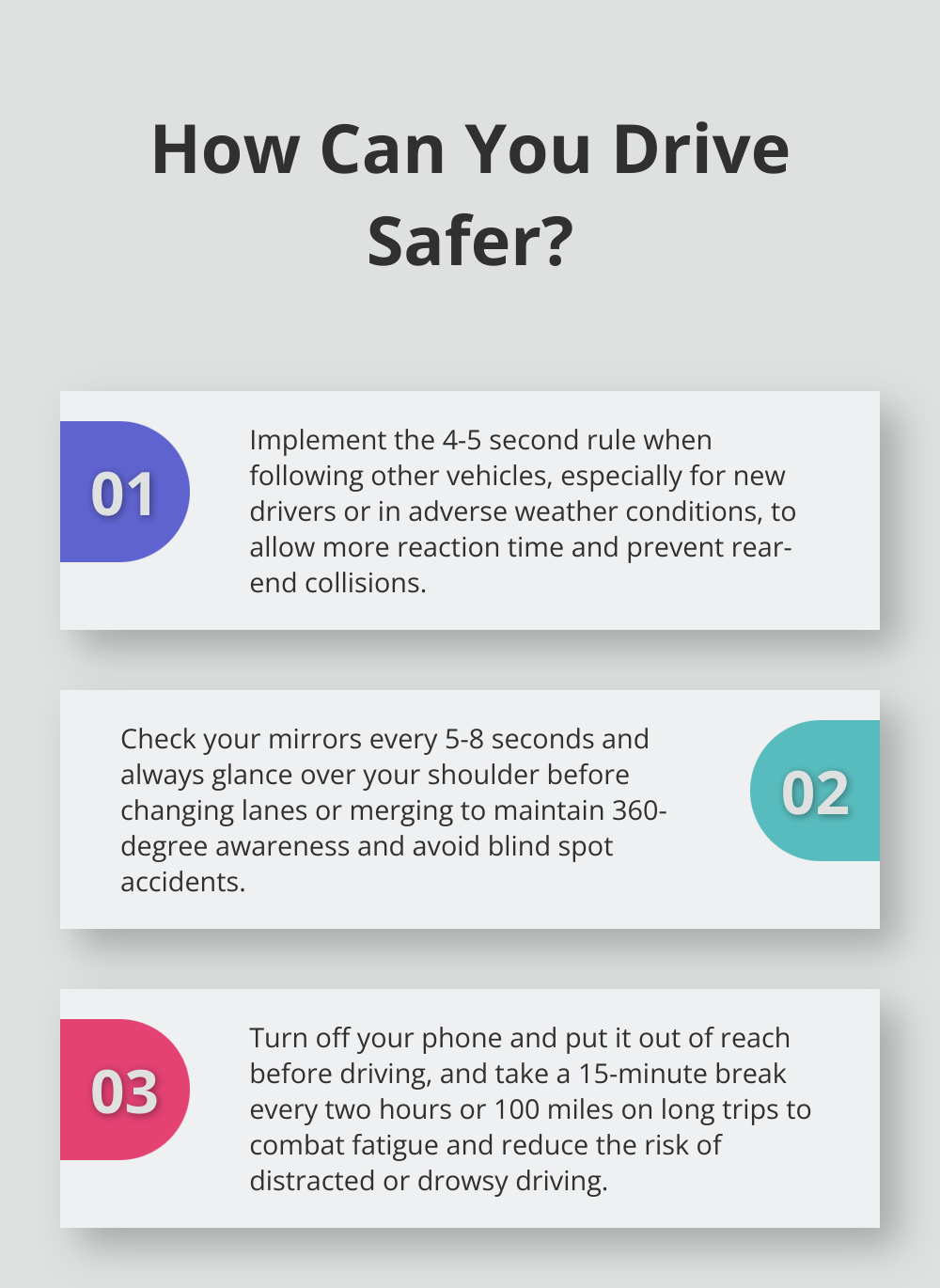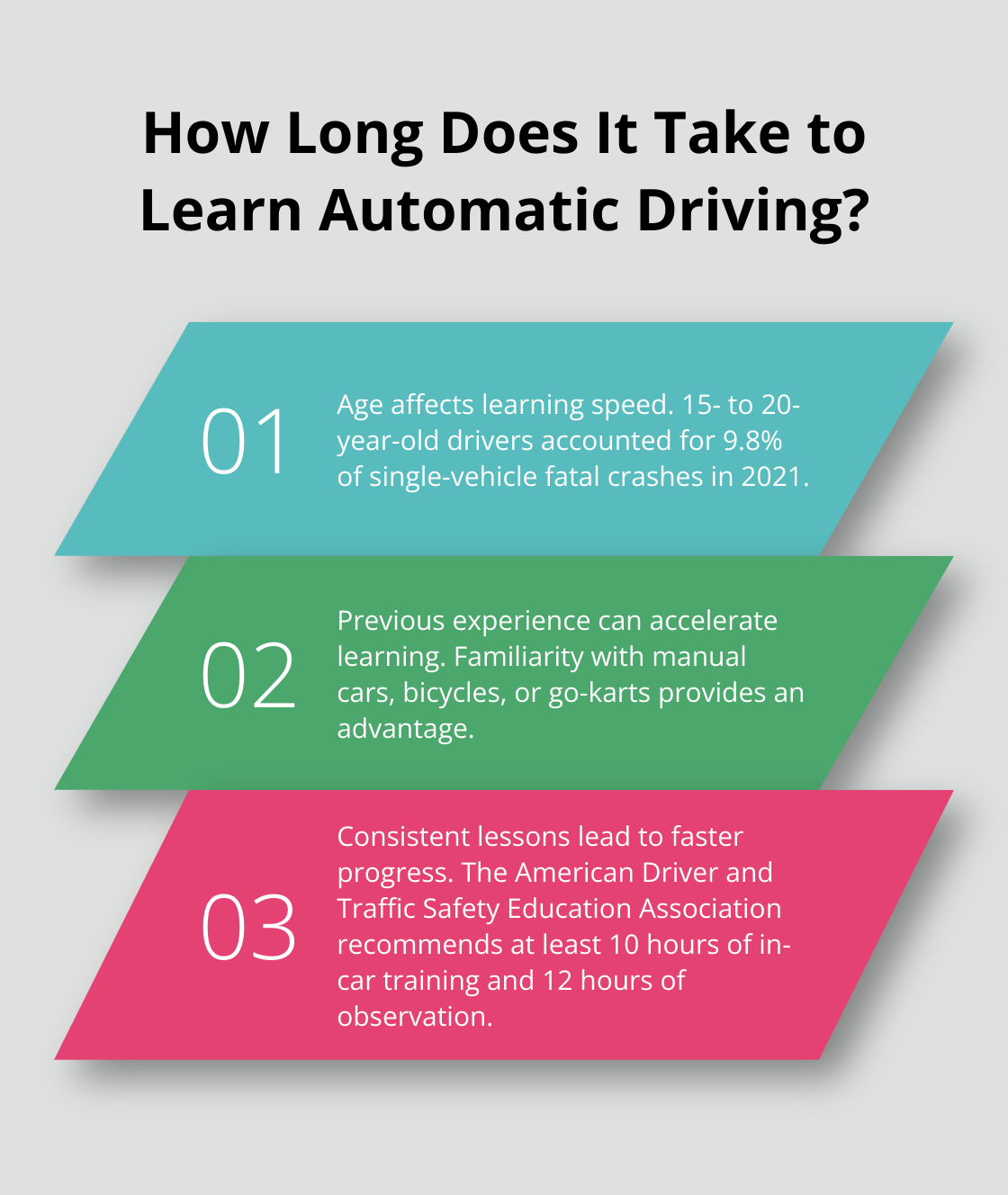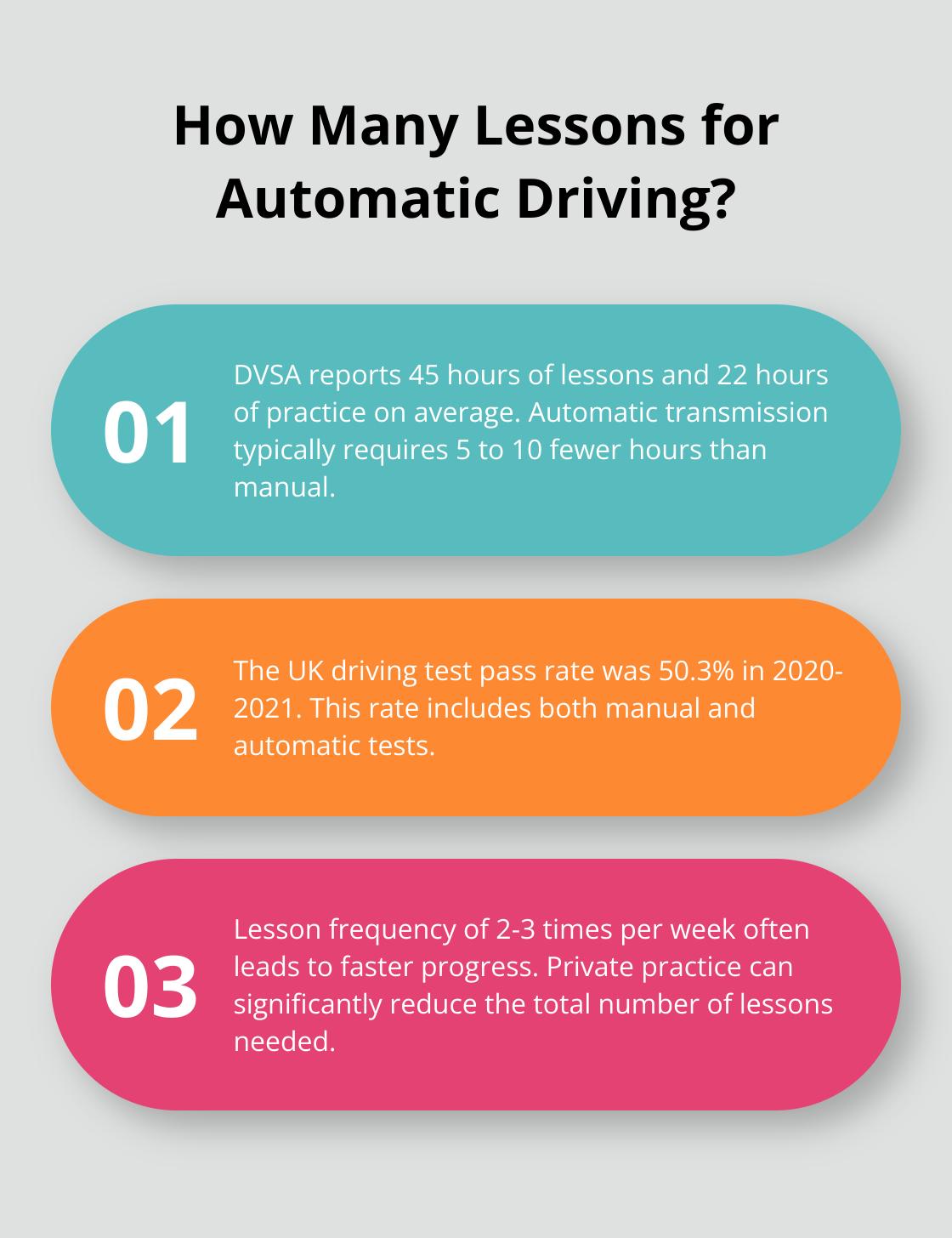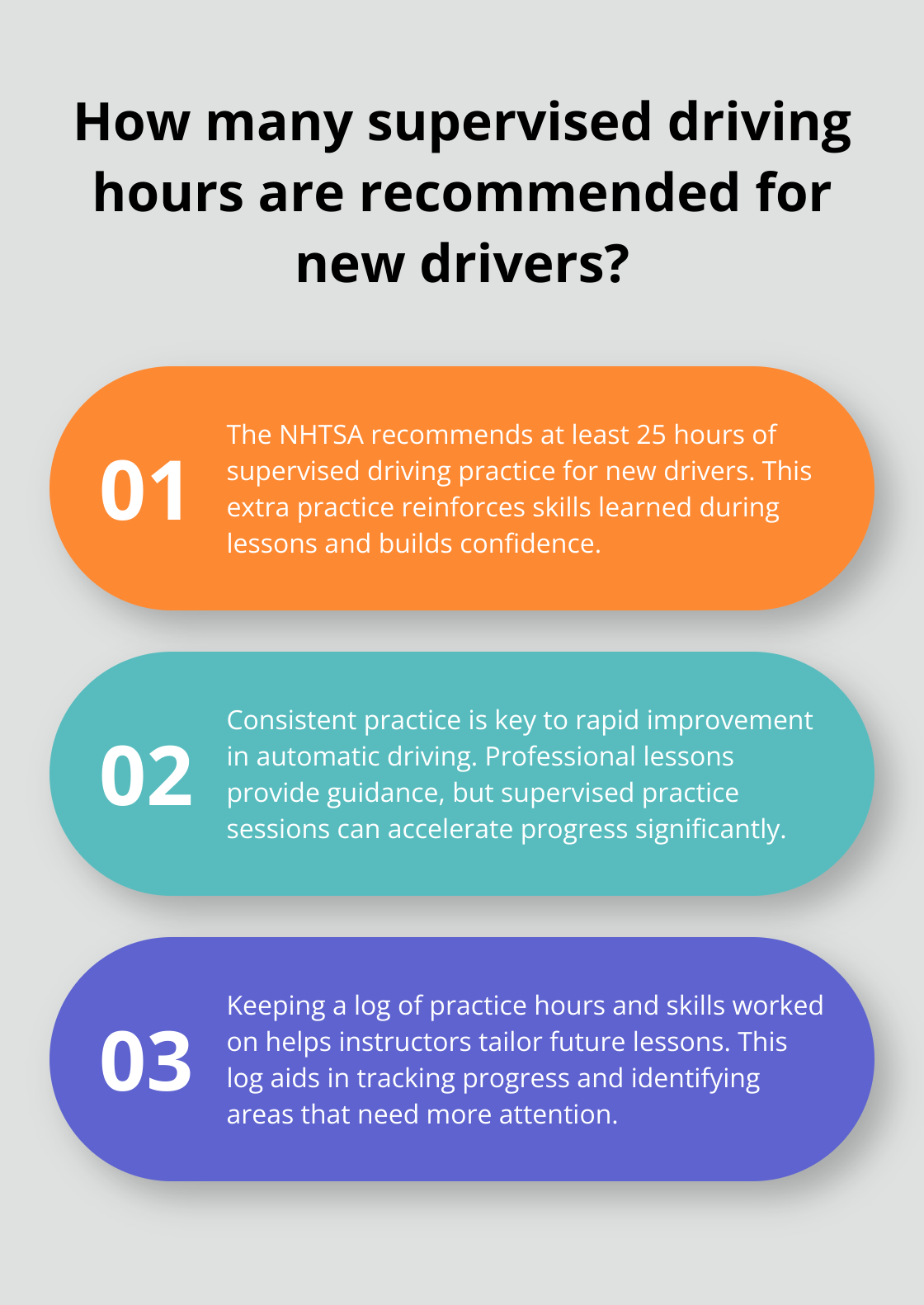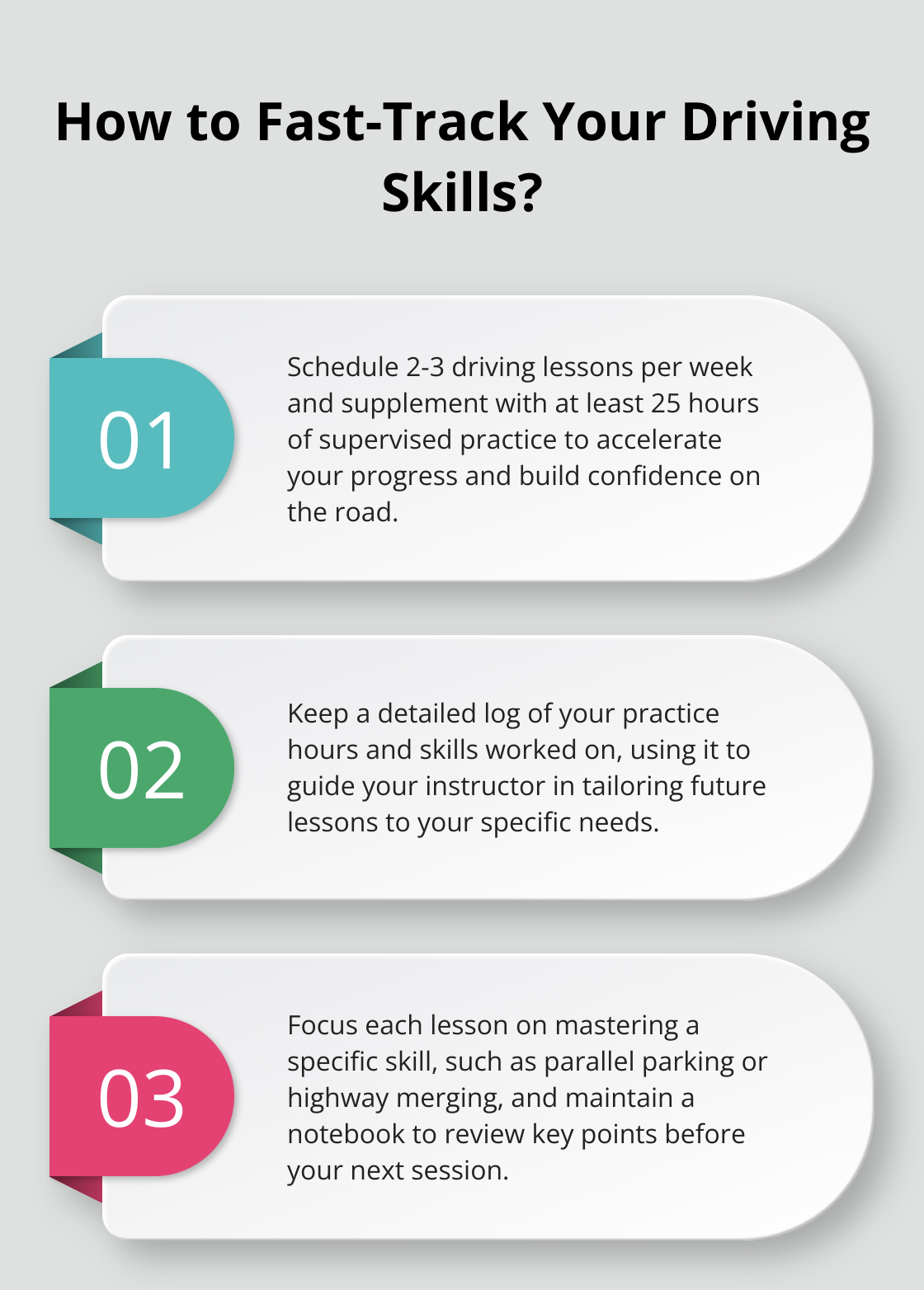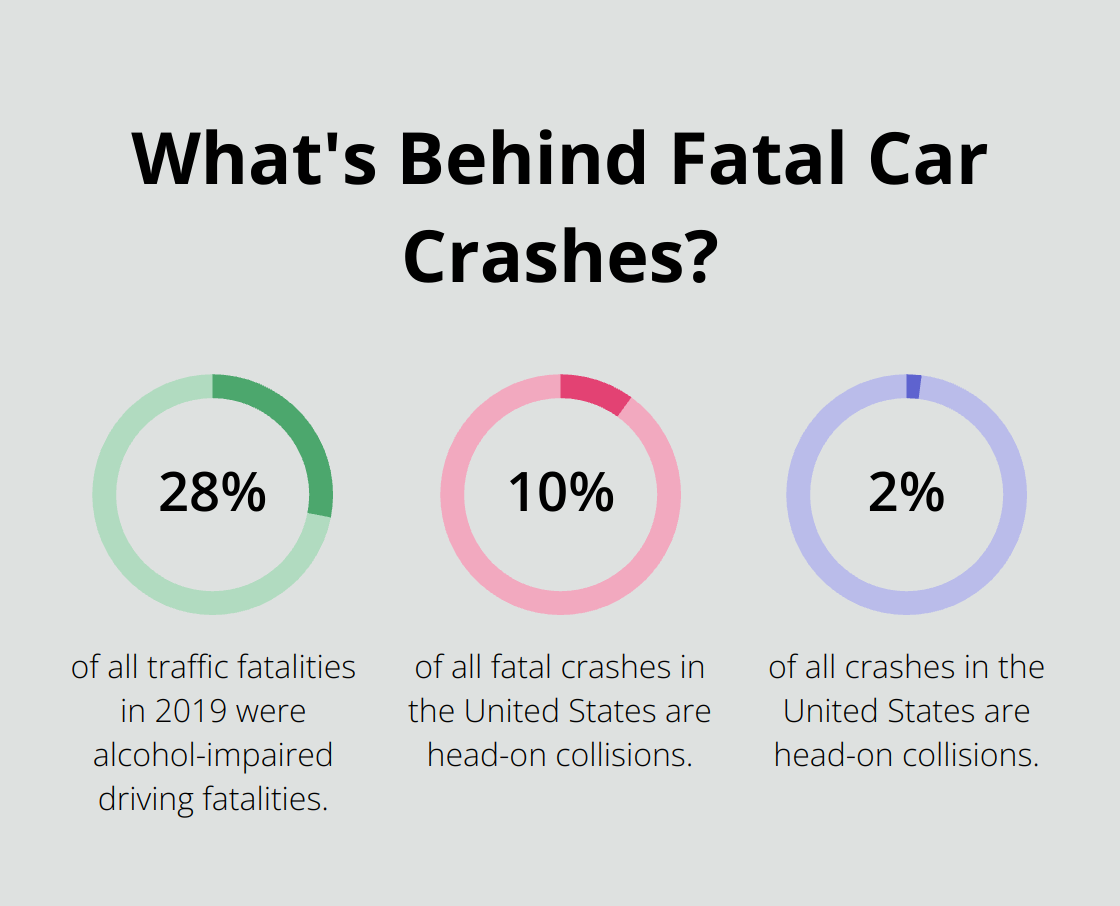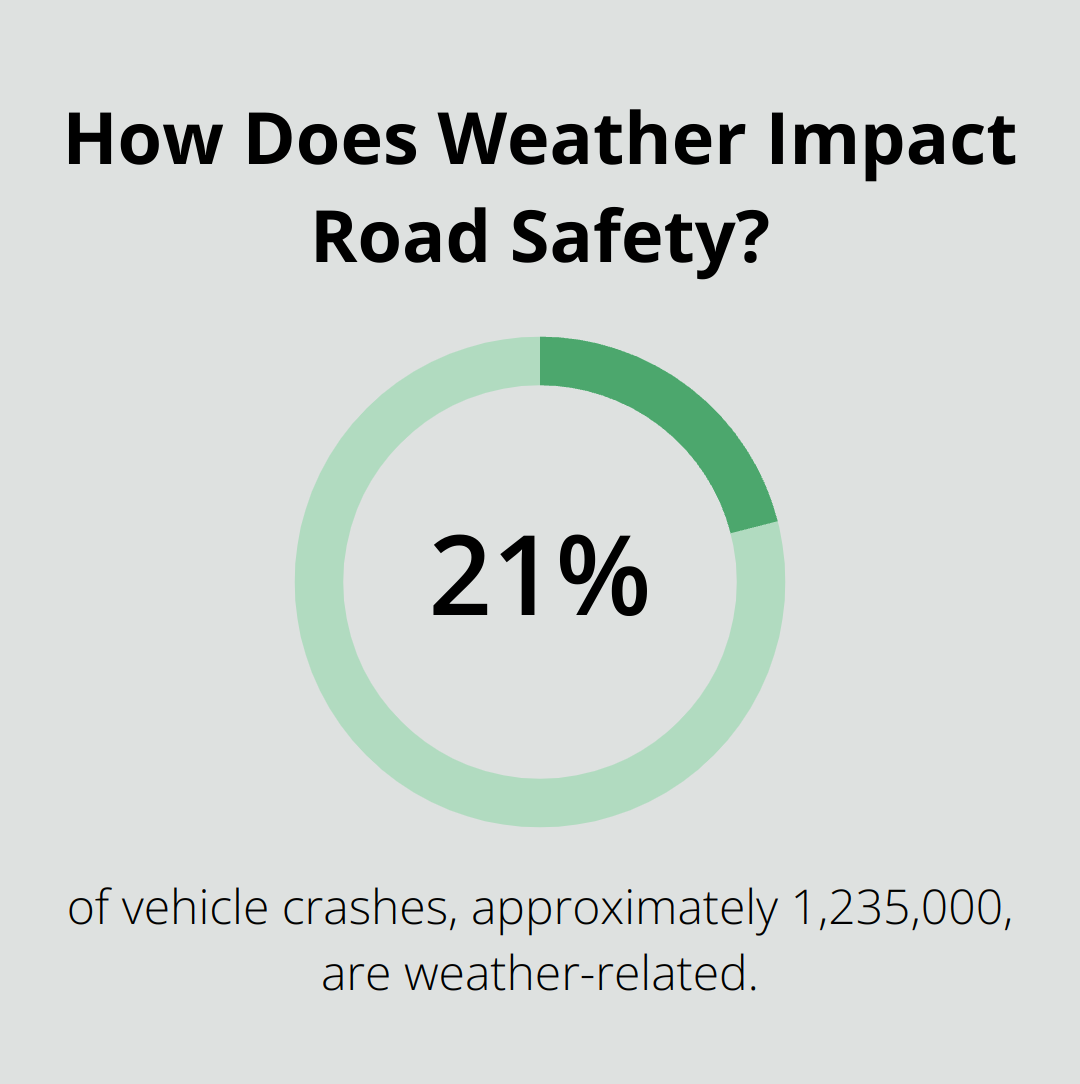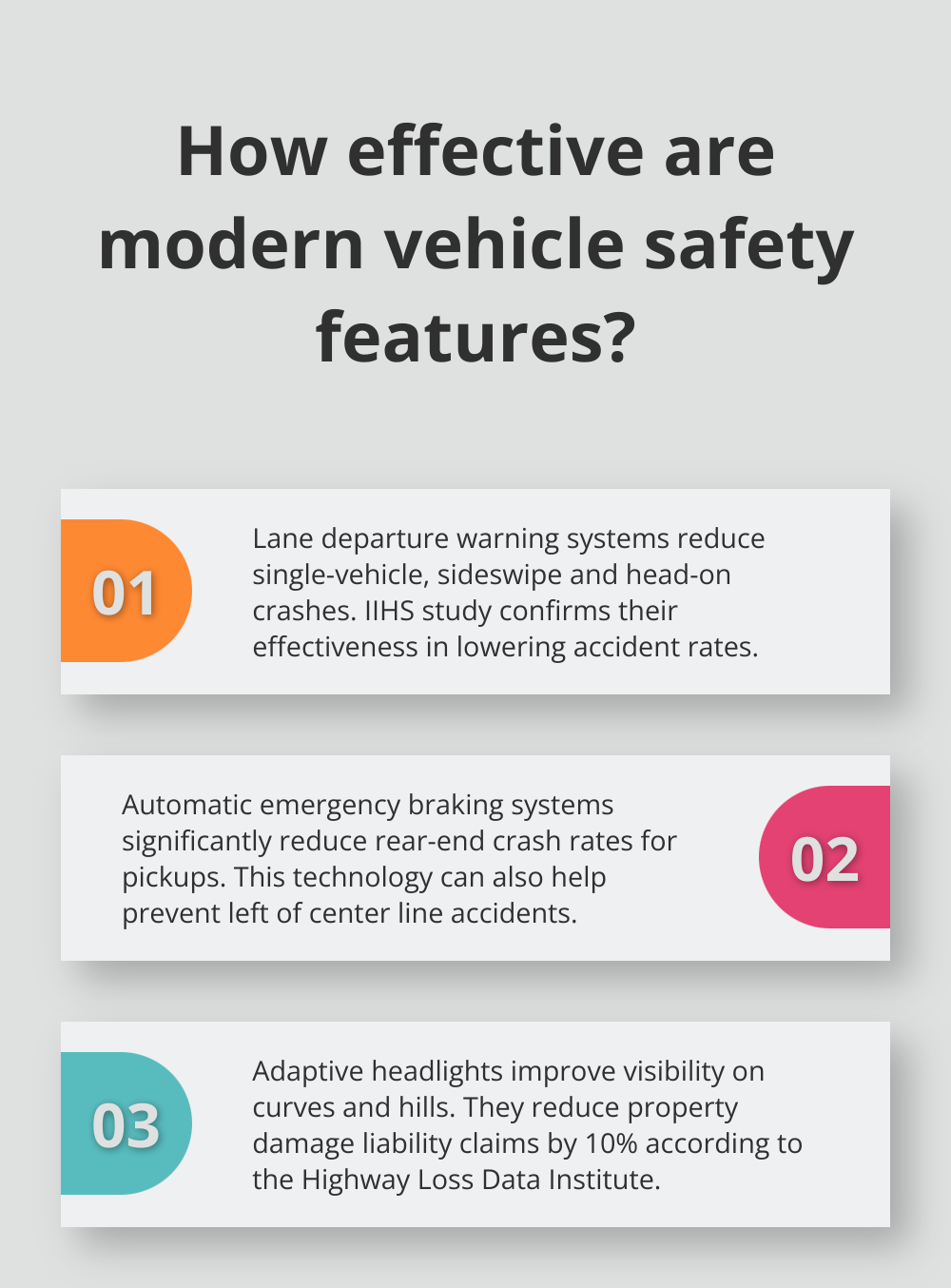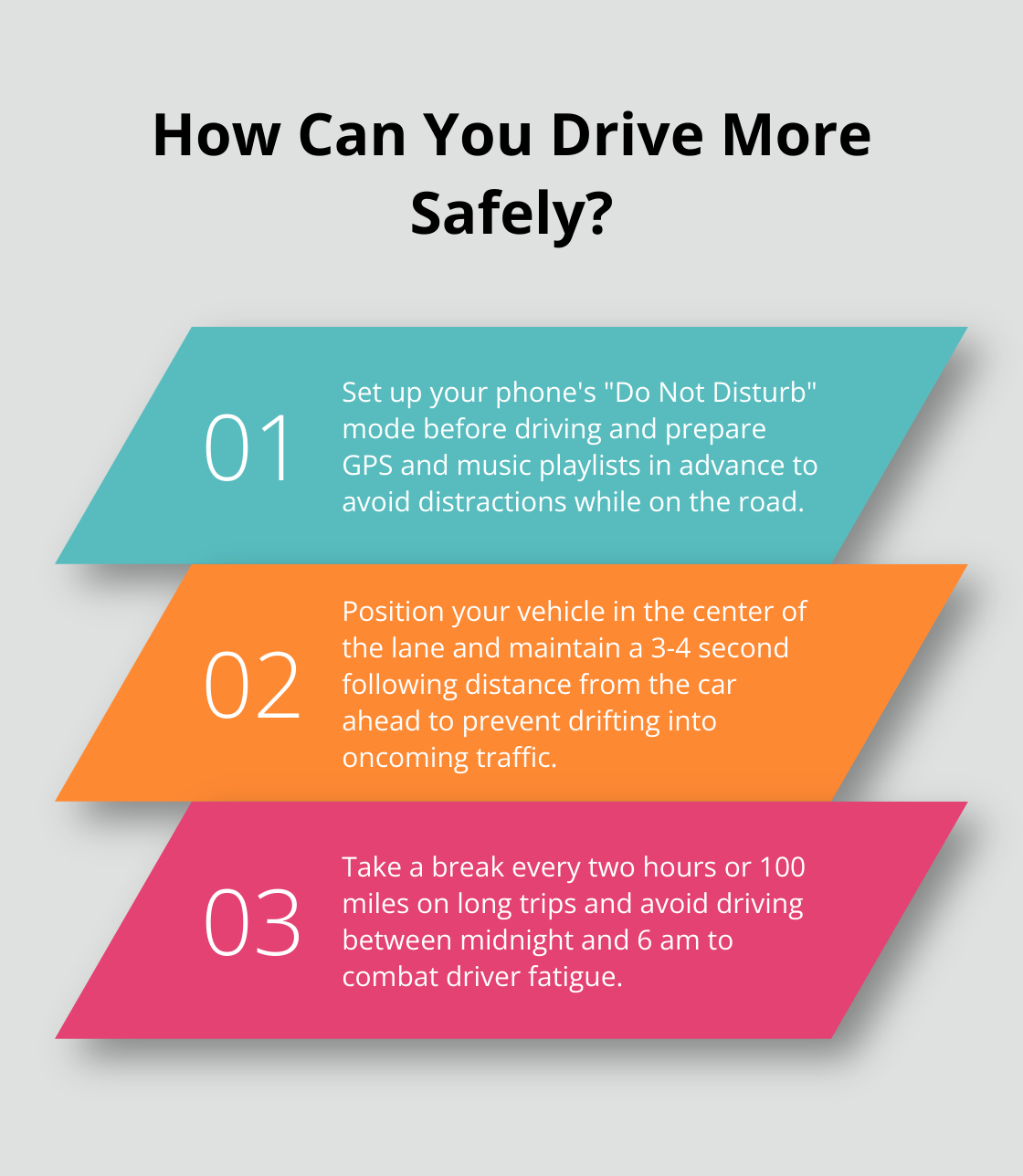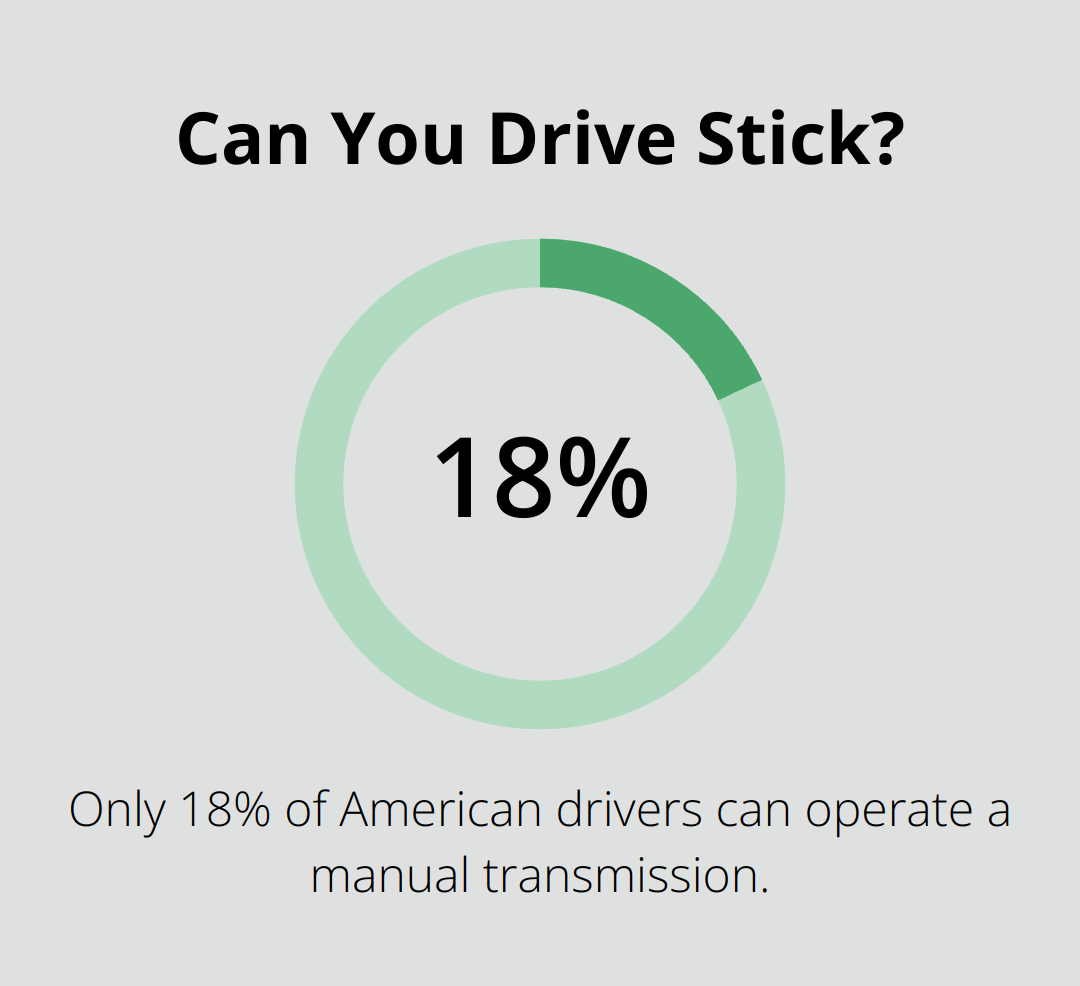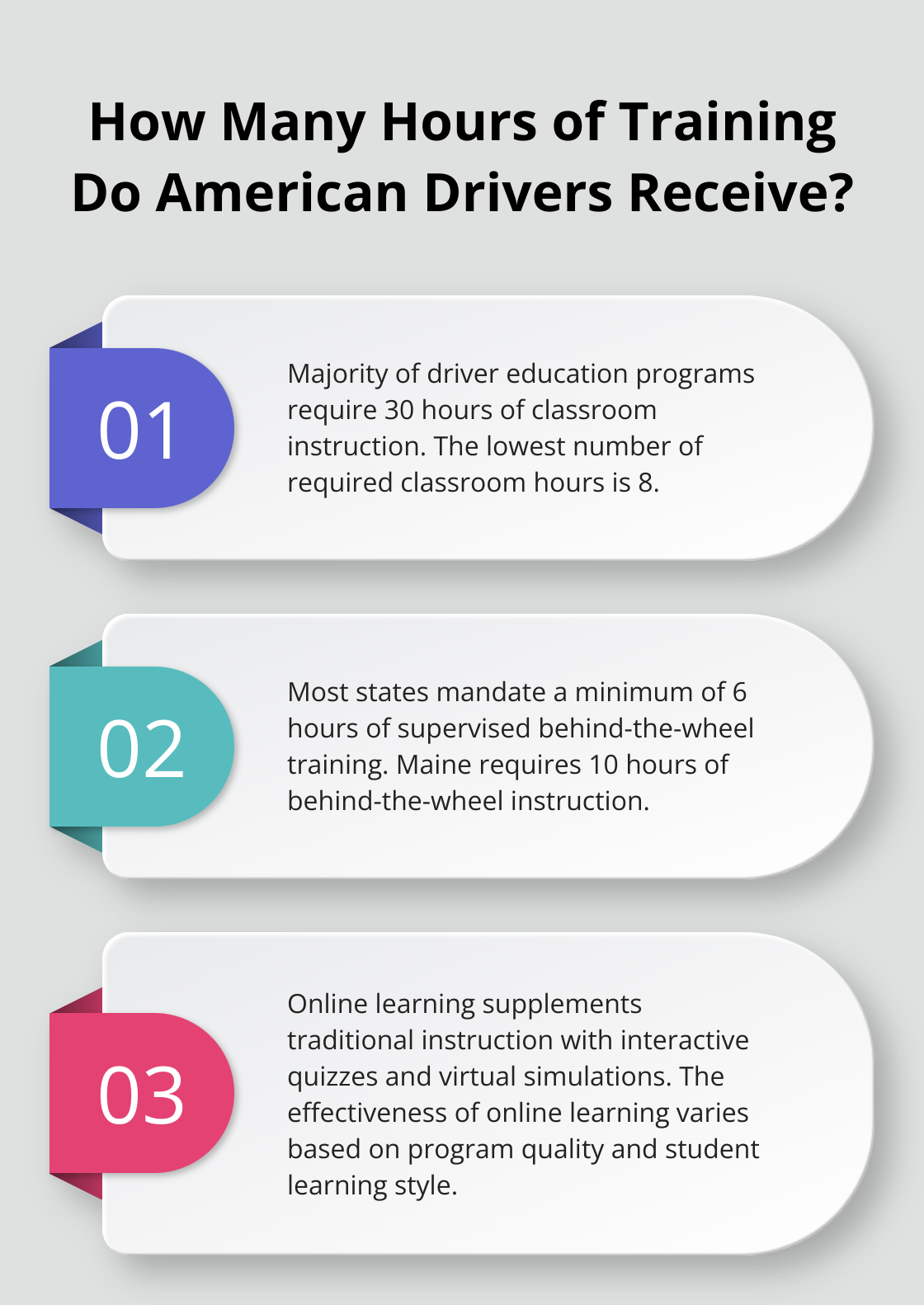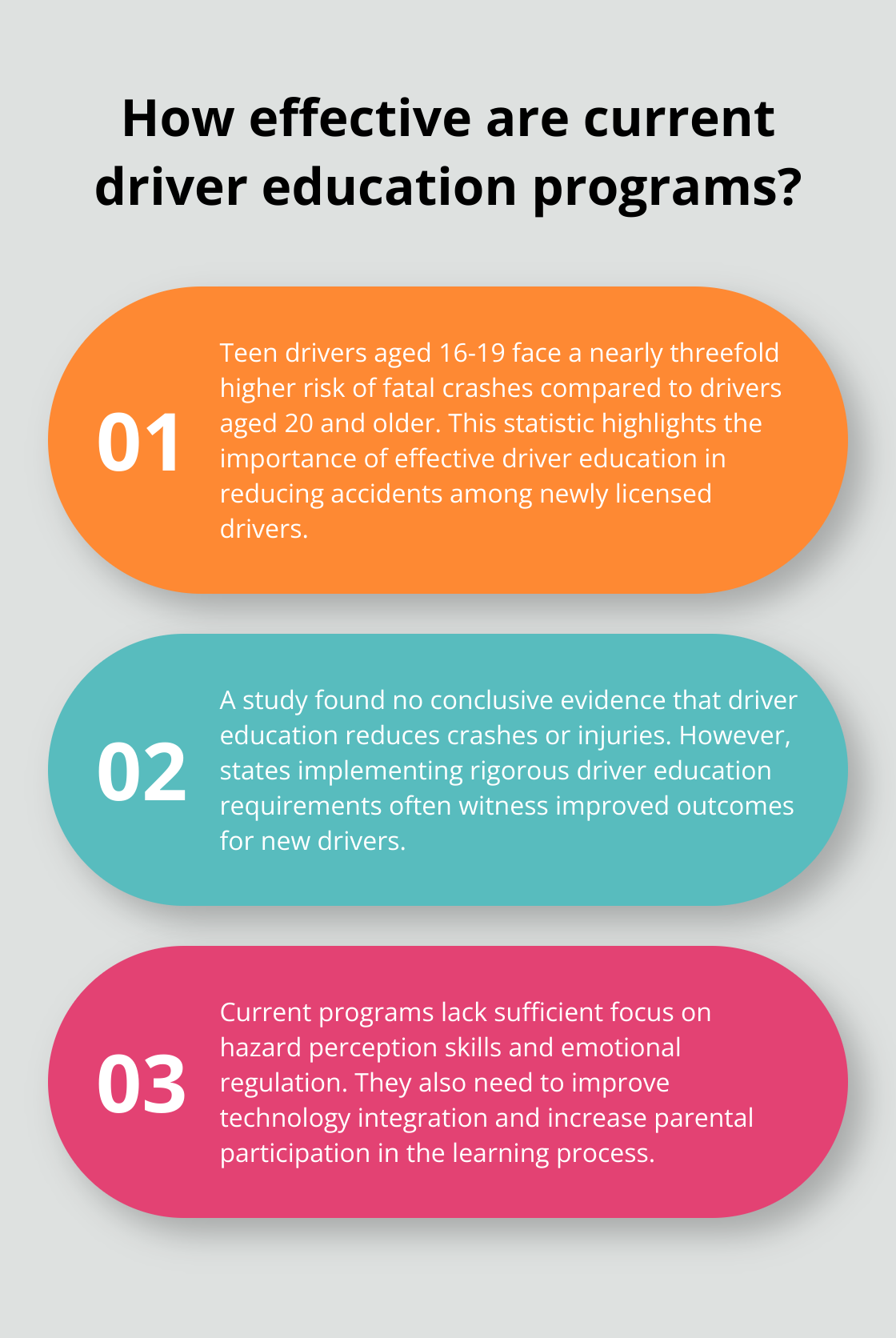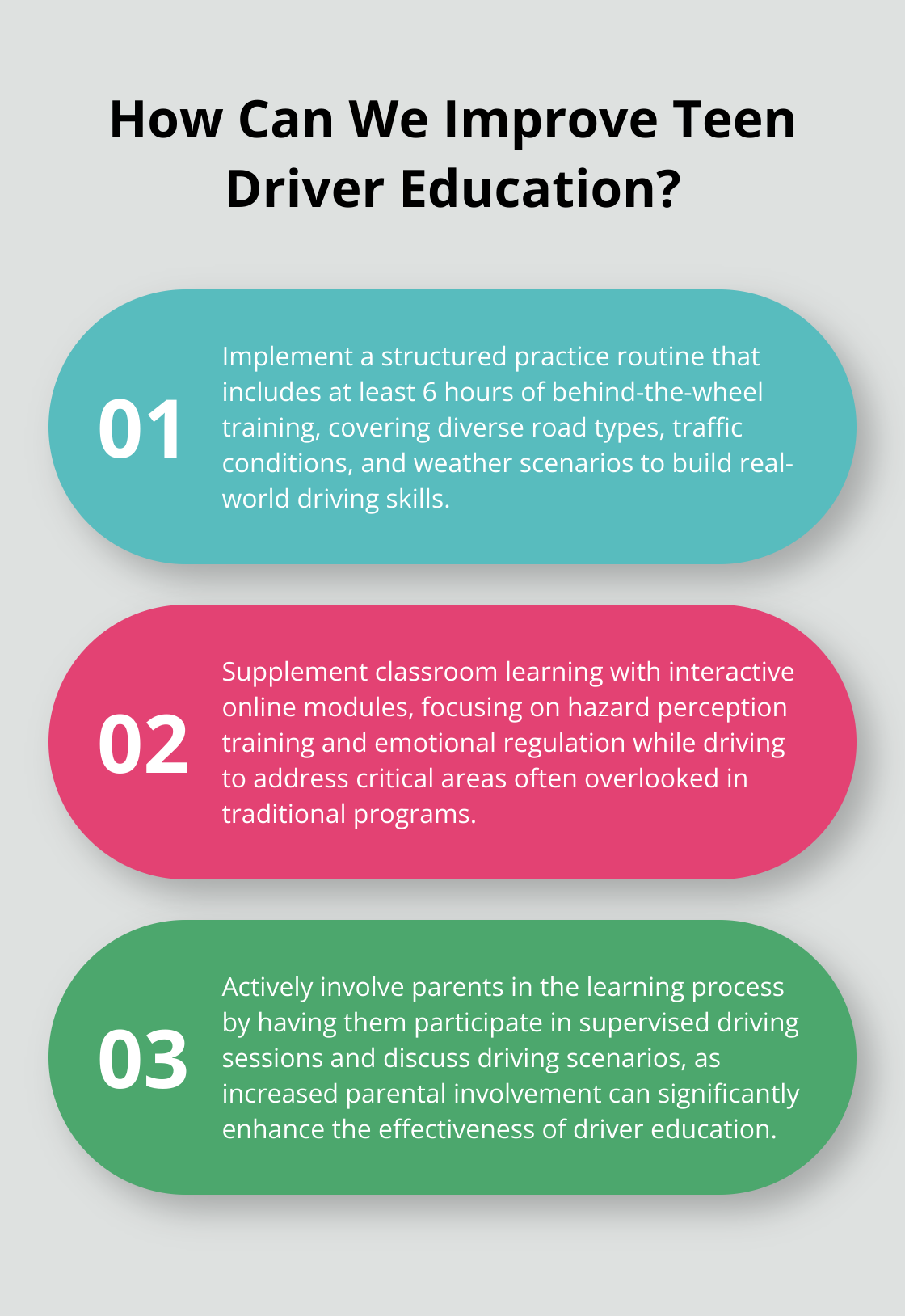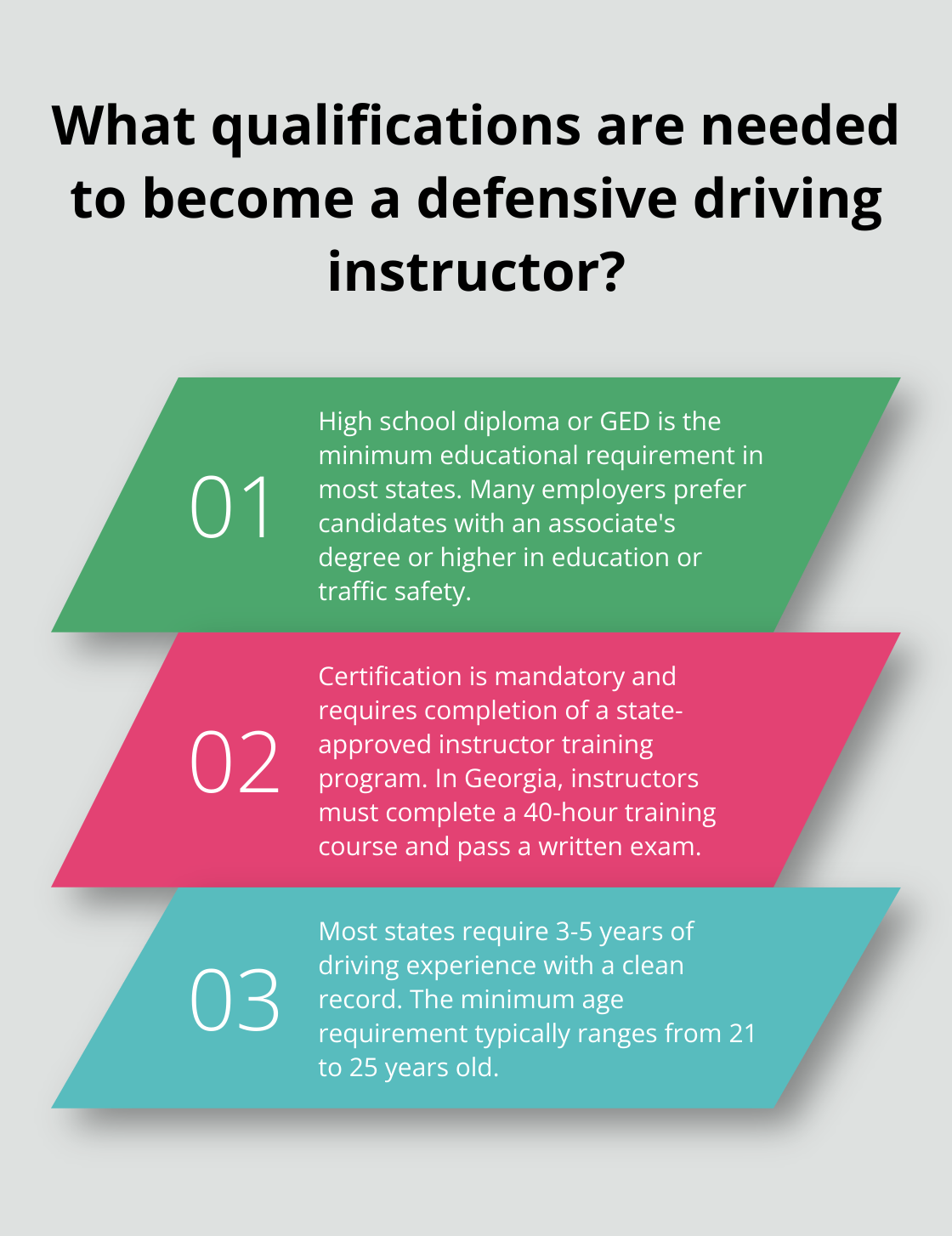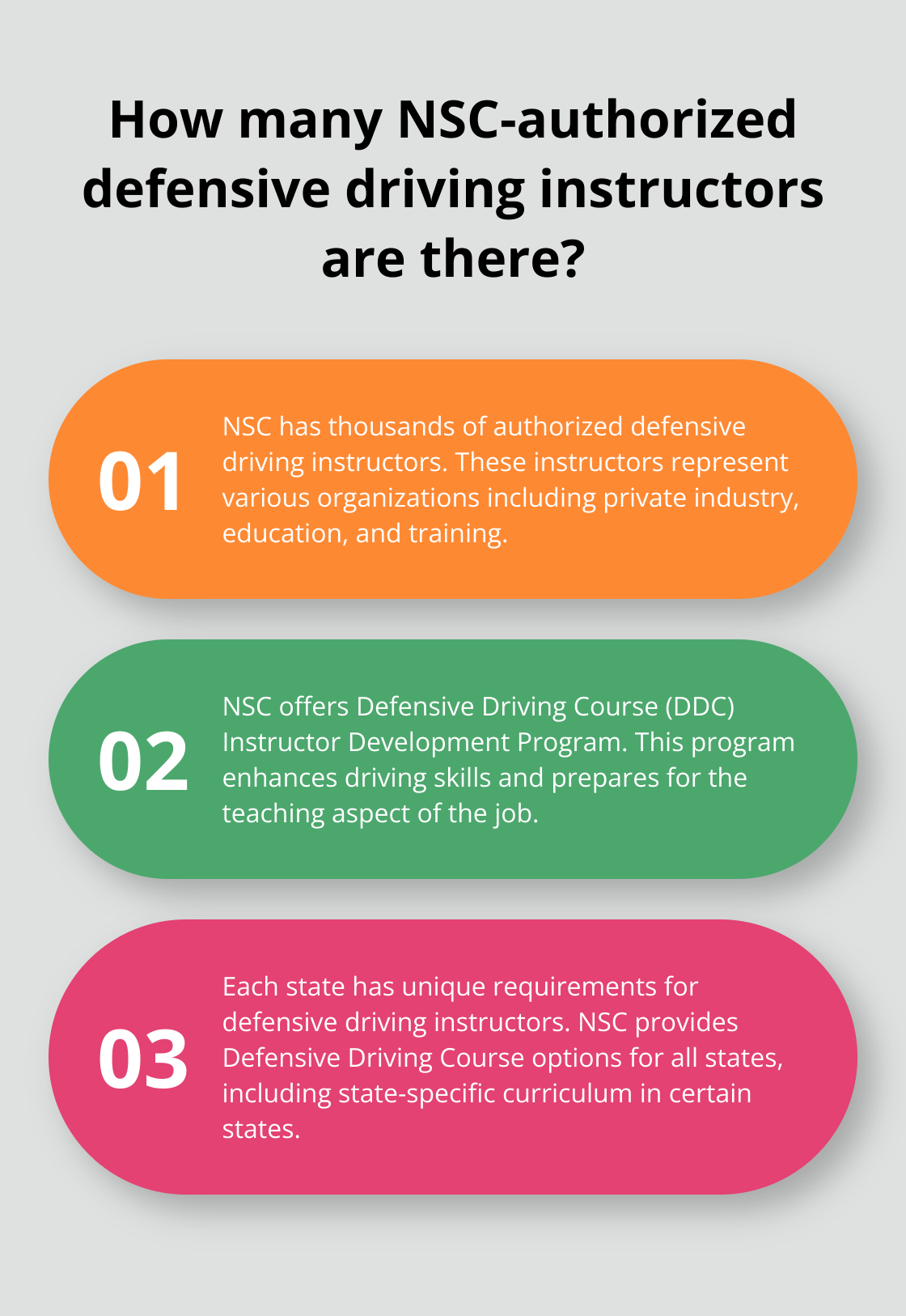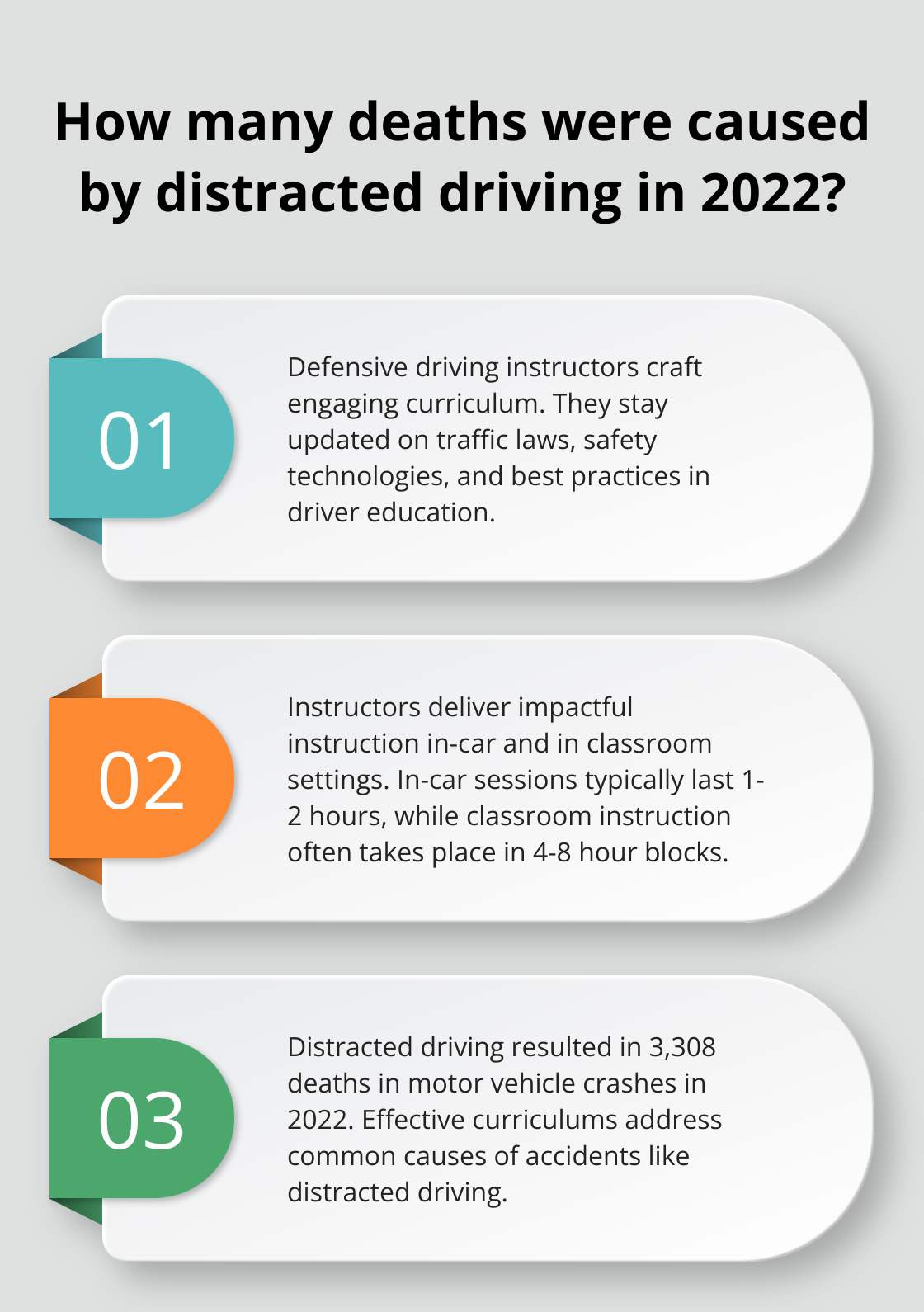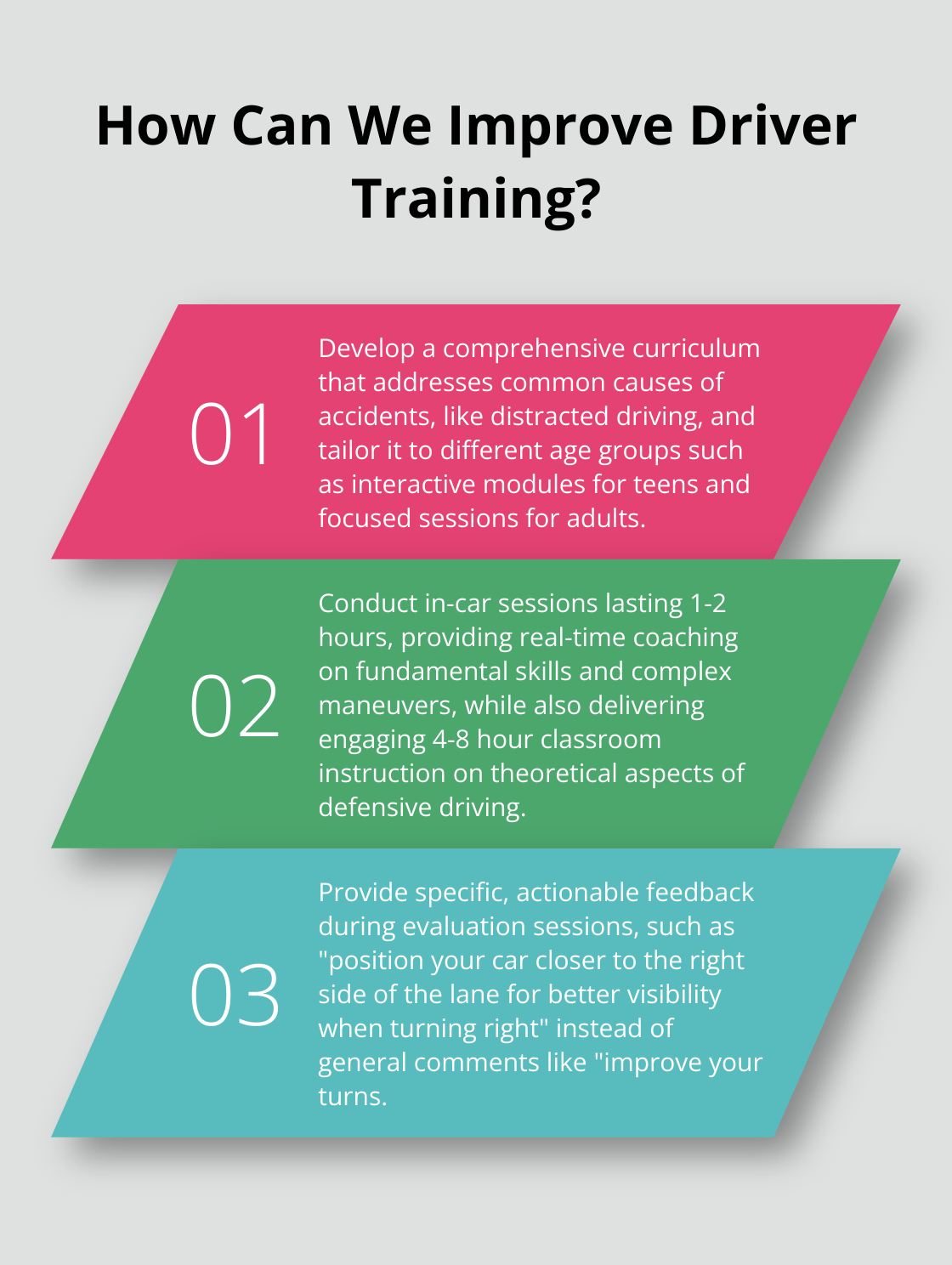Cost of Defensive Driving Classes: What to Expect
At The Wiser Driver Driving School, we often get asked, “How much do defensive driving classes cost?” The answer isn’t straightforward, as several factors influence the price.
In this post, we’ll break down the various elements that affect the cost of defensive driving courses. We’ll also explore the average prices you can expect and the long-term benefits that make these classes a worthwhile investment.
What Impacts Defensive Driving Class Costs?
Course Duration and Format
The cost of defensive driving classes varies significantly based on several key factors. Prices range from $15 to $150, depending on specific circumstances.
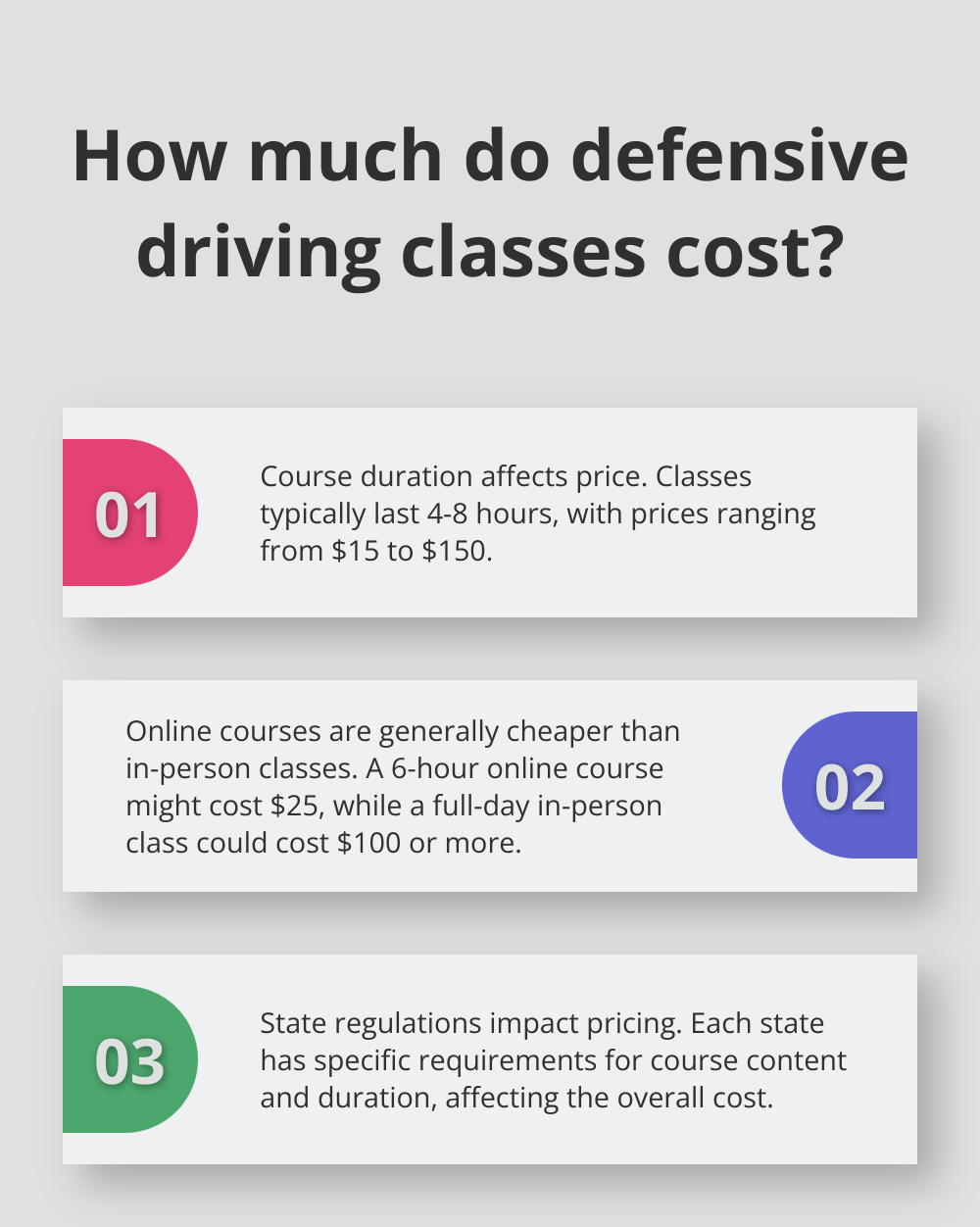
The length of the course plays a primary role in determining cost. Defensive driving classes typically last between 4 to 8 hours. Longer courses often come with a higher price tag but may offer more comprehensive instruction. For example, a 6-hour online course might cost around $25, while a full-day in-person class could run up to $100 or more.
The format of the class also influences pricing. Online driving courses often cost less than in-person classes, primarily because there are no overhead expenses for classroom space or materials. They offer flexibility, allowing students to complete the course at their own pace within a set timeframe (usually 30 days). In-person classes, while potentially more expensive, provide the benefit of direct interaction with instructors and immediate feedback.
State-Specific Requirements
Each state has its own regulations for defensive driving courses, which can impact the cost. Some states mandate specific course content or minimum durations, which affects pricing. It’s essential to check your state’s requirements to ensure you’re taking an approved course that will meet your needs (whether for insurance discounts or ticket dismissal).
Instructor Expertise and Course Quality
The qualifications and experience of instructors can influence the cost of defensive driving classes. Courses led by highly experienced instructors or those with specialized credentials may command higher prices.
Additionally, the quality and depth of course materials, including interactive elements, video presentations, and real-world simulations, can affect pricing. High-quality, engaging content often comes at a premium but can lead to better learning outcomes and improved driving skills.
Long-Term Benefits
When considering the cost of a defensive driving class, it’s important to weigh these factors against the potential benefits. Many drivers find that the long-term savings from insurance discounts and improved driving skills far outweigh the initial course fee. Completing an advanced driving course can make you eligible for lower insurance premiums. Insurance companies base their rates on risk, and drivers who have completed these courses are often seen as lower-risk.
As we move forward, let’s explore the average costs you can expect for different types of defensive driving classes and how they compare across various providers.
How Much Do Defensive Driving Classes Really Cost?
Defensive driving classes vary widely in price, depending on several factors. Prices range from as low as $15 to as high as $150. Let’s break down the costs you can expect for different types of courses.
Online Course Pricing
Online defensive driving courses offer the most affordable option. Prices typically start around $25 and can reach up to $50. The California Traffic School, for example, provides a popular online course for $24.95 (without hidden fees). In Texas, the minimum cost for an online defensive driving course hovers around $25. These courses allow you to complete the material at your own pace within a set timeframe (usually 30 days).
In-Person Class Costs
In-person defensive driving classes cost more due to overhead expenses like facility rental and instructor fees. These courses usually range from $50 to $150. The higher price often includes benefits such as immediate instructor feedback and hands-on learning experiences. Some providers may offer additional perks (e.g., meals or teaching materials), which can contribute to higher fees.
Additional Fees to Consider
When budgeting for a defensive driving course, factor in potential additional costs. Some providers charge processing fees for certificate mailing, which can add $5 to $10 to your total. Others may have rescheduling fees if you need to change your course date. Always read the fine print to understand the full cost before enrolling.
Long-Term Savings
While upfront costs may seem high, the long-term savings can prove substantial. Many insurance companies offer defensive driving course discounts, with most drivers expecting a discount of about 10%. These discounts typically last for three years before you need to retake the course.
Comparing Costs Across Providers
When comparing costs across different providers, consider the value you receive for your money. A slightly more expensive course might offer more comprehensive content or better-quality instruction. Check with your insurance provider about which courses they approve for discounts. Some companies have specific requirements or preferred providers.

The cost of defensive driving classes represents an investment in your safety and potential long-term savings. As we move forward, let’s explore how these costs translate into tangible benefits that offset the initial expense.
How Defensive Driving Classes Pay Off
Insurance Premium Reductions
Completing a defensive driving course can lead to significant savings on insurance premiums. Many insurance providers offer discounts to drivers who successfully complete an approved defensive driving program. These discounts typically range from 5% to 20% (with an average of about 10%). For a typical driver, this translates to annual savings of approximately $170 on car insurance premiums.
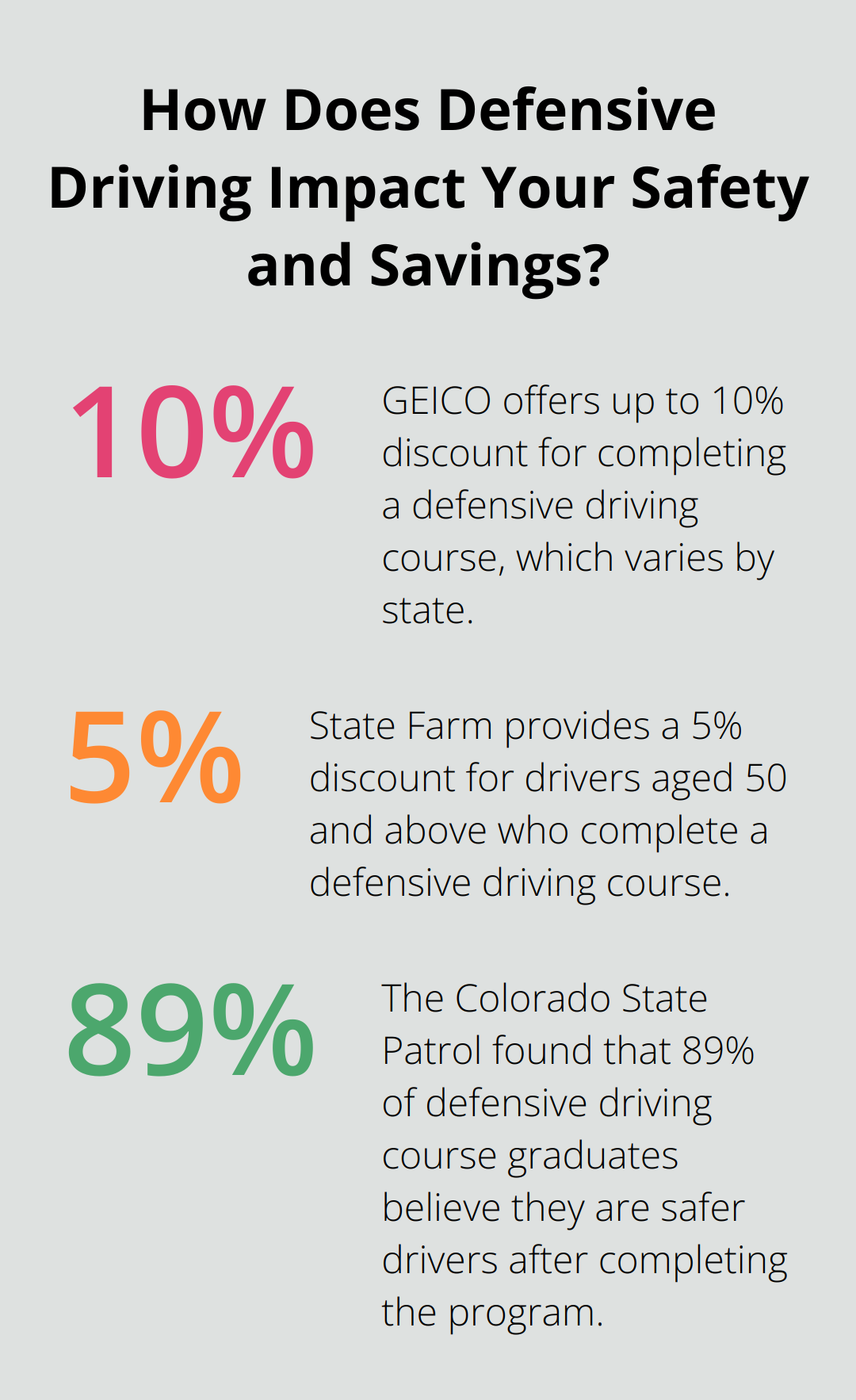
Insurance companies such as GEICO and State Farm often provide discounts for defensive driving course completion. GEICO offers up to 10% discount, which varies by state, while State Farm provides a 5% discount for drivers aged 50 and above. These discounts usually last for three years before drivers need to retake the course. To maximize savings, drivers should check with their insurance provider about specific requirements and approved course lists.
Driving Record Improvement
In many states, completing a defensive driving course helps remove points from a driver’s record. For example, Indiana allows drivers to remove up to four points from their license by taking an approved course. This benefit extends beyond maintaining a clean record – it also prevents insurance rate increases due to accumulated points.
Some states permit drivers to use defensive driving courses for ticket dismissal. Texas, for instance, allows drivers to take a defensive driving course once every year (with court permission) to dismiss a traffic ticket. This option saves drivers from paying hefty fines and keeps their driving records unblemished.
Enhanced Road Safety Skills
The most valuable outcome of a defensive driving course is the improvement in driving skills. These courses cover critical topics such as crash statistics, driving psychology, and state traffic laws. Participants learn essential techniques for hazard recognition, proper following distances, and adjusting to various driving conditions.
Speed management is a crucial aspect of defensive driving courses. Advancing speed management for safety can reduce speeding-related injuries and fatalities on the Nation’s highways and byways. The Colorado State Patrol found that 89% of defensive driving course graduates believe they are safer drivers after completing the program.
Long-Term Cost Savings
Improved driving skills lead to fewer accidents and tickets, which results in long-term cost savings. Drivers who apply the techniques learned in defensive driving courses reduce their risk of costly collisions and traffic violations. This reduction in incidents keeps insurance premiums low and avoids expensive repairs or legal fees.
Professional Development
For some professions, completing a defensive driving course can enhance career prospects. Commercial drivers, delivery personnel, and those who frequently drive for work may find that these courses improve their job performance and make them more valuable to employers. Some companies even require or prefer employees to complete defensive driving training, making it a worthwhile investment in professional development.
Final Thoughts
The cost of defensive driving classes ranges from $15 to $150, influenced by factors like course duration, format, and state requirements. Online courses offer affordability, starting at $25, while in-person classes can reach $150 but provide hands-on experiences. The value of these courses extends beyond the initial price, offering insurance premium reductions, potential point removal, and enhanced road safety skills.
The Wiser Driver Driving School offers comprehensive defensive driving programs for drivers of all ages and experience levels. Our state-approved courses combine online convenience with hands-on learning from experienced instructors. We support drivers who want to reduce license points, lower insurance rates, or become safer on the road.
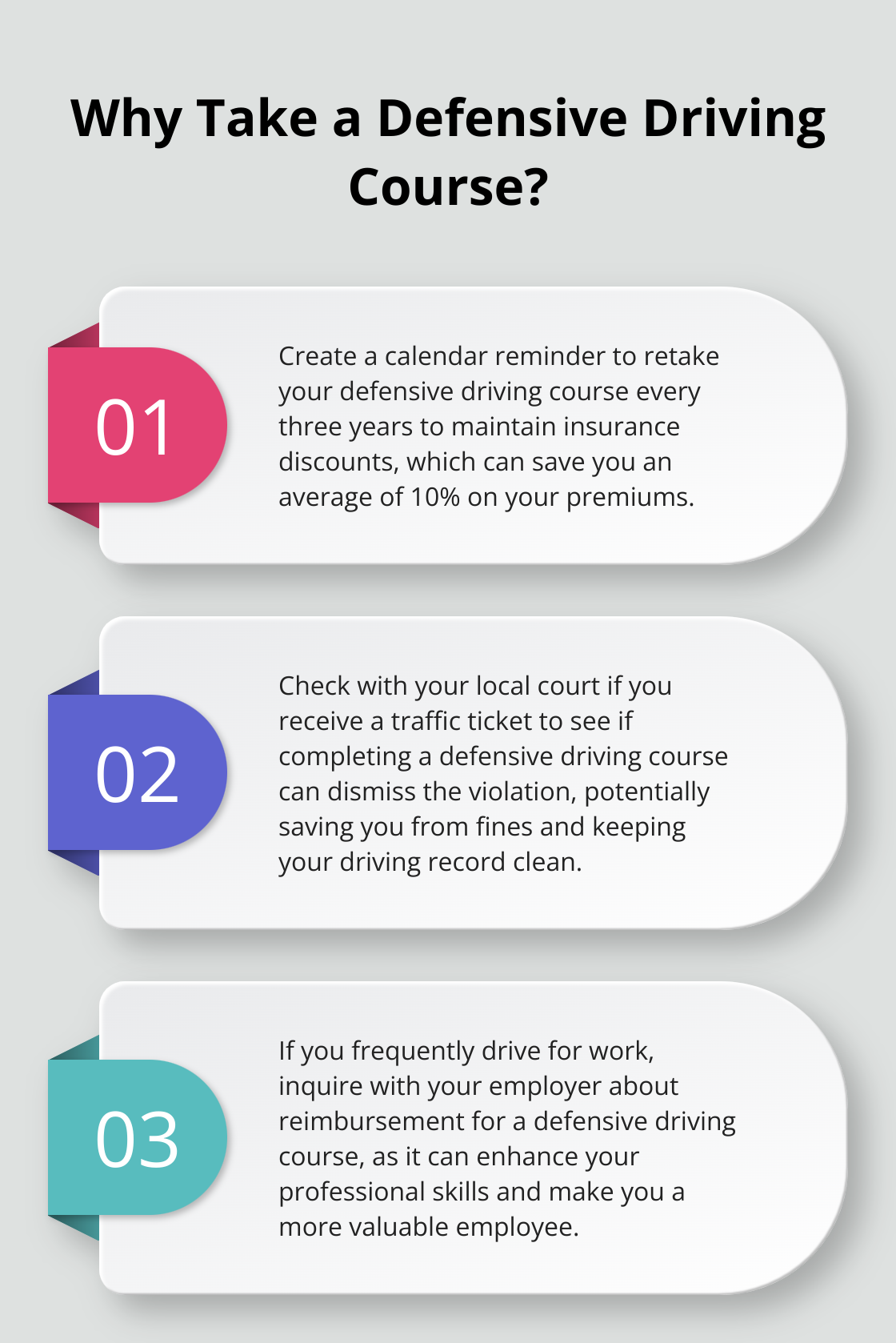
Investing in defensive driving education benefits you and your future. The costs of these classes vary, but the rewards of becoming a more skilled, aware, and confident driver are invaluable. Take action towards safer driving today – your future self will appreciate it.



